Show the table of contents, index, and glossary tabs and the Search box

Starting Travel Reservations
The online booking tool walks you through the process of making air, rail, hotel, and/or rental car reservations, while using your company's preferred vendors and complying to your company's travel policy. If you have specific questions about your company's travel policy, please contact your company administrator.
If your site is configured, you can use collaboration tabs across the top of the page to access other functionality, such as outbound single sign-on sites. If enabled, the system shows the Book travel tab for normal travel functionality. If your site is configured, you can use collaboration links in the hamburger menu, at the top-left corner of the page, in the External links submenu to access other functionality, such as outbound single sign-on sites. You can enable up to 5 collaboration tabs.

Note Your site administrator may have turned off the flight, train, hotel, or car reservation features.
For more information, click one of the following: For more information, tap one of the following:
- Start travel reservations , book for a guest , or for travel arrangers, start reservations for one of my travelers .
- View and modify your existing trips.
- View and acquire trip templates.
- View unused tickets.
- Change your profile settings and travel preferences.
- Change settings for your travel arrangers or the people for whom you arrange travel .
- Access other agency and travel tools .
Start travel reservations
- On the Home page, if you have Demand Management functionality configured, enter required information, such as the purpose of your trip.
Select whether you want a round-trip, one-way, or multi-destination trip.
Notes
- Multi-destination trips can only be shopped by time (not price).
- Multi-destination is not available for European train trips.
- Enter your departure and arrival cities, travel dates, and other criteria as needed. If you chose a multi-destination trip and your site is setup to select classes of service, you can select the class of service for each leg.
Depending on your site configuration, you can select Advanced search options. If necessary, click the Advanced search options link, and do one or more of the following: If necessary, tap the Advanced search options link, and do one or more of the following:
- If your site allows it and you want to reserve ground transportation (executive sedan, limousine, shuttle, or parking), in the Other booking options section, click the Taxis, Limos & Executive Sedans link. If your site allows it and you want to reserve ground transportation (executive sedan, limousine, shuttle, or parking), in the Other booking options section, tap the Taxis, Limos & Executive Sedans link. For more information, see the Ground Network Traveler Guide (in US English only).
- Click Search . Tap Search .
- If you need air transportation, select the departing flight you want to take and then the return flight you want to take .
- If you need rail transportation, select the trains you want to take .
- If you need a hotel room, enter your hotel criteria and then select the hotel you want to reserve .
- If you need a rental car, enter your rental car criteria and then select the rental car you want to reserve .
- On the Trip review and checkout page, review your selections .
If you want to add or modify the seat assignment for your flight(s), click Select/change seats to reserve your seats . If you want to add or modify the seat assignment for your flight(s), tap Select/change seats to reserve your seats .
Note If there is a Hotel Connect segment in the itinerary, you cannot select the Select/change seats option after clicking the Update Price button on the Trip review and checkout page. If there is a Hotel Connect segment in the itinerary, you cannot tap the Select/change seats option after tapping the Update Price button on the Trip review and checkout page.
- Depending on your site configuration, to add a flight , hotel , or rental car to your trip, click Add to this trip , select items to add, and click Add item to search for and select the flight(s), hotel, or rental car. Depending on your site configuration, to add a flight , hotel , or rental car to your trip, tap Add to this trip , tap items to add, and tap Add item to search for and select the flight(s), hotel, or rental car. Repeat this step for each additional item you need to add to your trip.
- Complete your purchase .
Access to GetThere booking tool has changed
USPS employees who use the GetThere travel booking tool no longer need a username and password to access the web-based app.
Instead, employees will have to access GetThere by using special URLs, depending on whether they are individually billed account or centrally billed account users.
The new URLs can be found on the Travel and Relocation Blue page , under the GetThere tab.
USPS Office of Inspector General employees, however, will continue to access GetThere by using their ACE ID and password.
WestPac, Minnesota-North Dakota lead in scanning data
Usps to end use of pst files to archive emails, calendar items, usps acting historian to speak at upu event in switzerland, post-story highlights, more to read.

USPS has established an anti-harassment info line
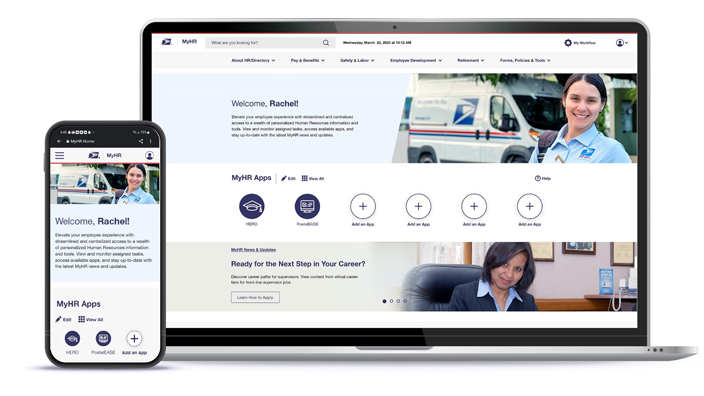
The Postal Service’s new HR website is available to all employees
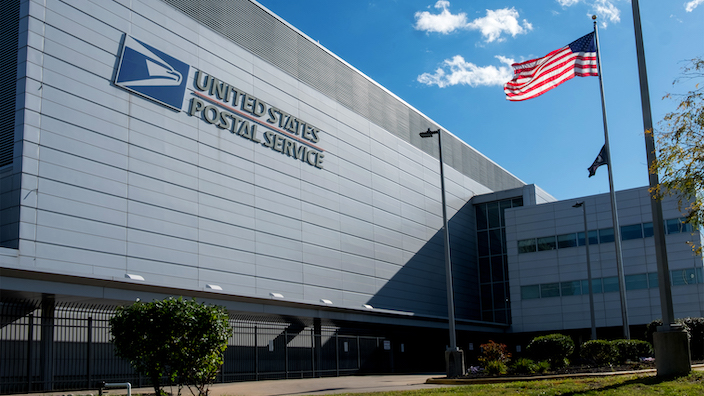
USPS wants everyone to know its policy regarding firearms on postal property
Footer items.
- Off the Clock
- Week in Review
USPS National Employee Emergency Hotline:
888-363-7462
Weekly highlights
- Why We’re Different
- Social Responsibility
- Government Travel Services
Government Online Booking Tool
- Government Event Management
- Air Services
- Corporate Online Booking
- Corporate Travel Solutions
- Corporate Event Management
- Corporate Hotel Programs
- Corporate Car Rentals
- Corporate Private Jet Rental
- Corporate Incentive Vacation Travel
- Intelligent Traveler
- Reporting Capabilities
- Invoice Lookup
- Government Online Booking
- Agent Pipeline
- Complete College
- Vanguard Inspection
- Report Card
- Visa & Passports
- Flight Stats
- Insider Report
The Best of Technology and Service
Government online booking tools utilizing getthere dashboards .
Major government agencies, as well as Fortune 500 companies, utilize our online booking system, which can consider your organization’s travel policy, preferences, and expense management all in one place. This unique dashboard, featuring at-your-fingertips service, puts you in control of your travel arrangements. We also have built-in quality control measures and an instant messaging feature that allow online agents to assist with any questions as you navigate the system.

- Personalize your booking tool to prevent travelers from booking out of policy flights and easily improve travel policy compliance.
- Save corporate air and car accounts to your site so corporate airline miles or negotiated rental agreements will automatically be included with every reservation.
- Include personalized notifications to alert travelers of company policies or announcements.
Convenient Traveler Profiles
Save your travel preferences and membership numbers right to your profile so you never need to look up your frequent flyer information again! Include meal preferences on flights, or brand preferences to pull your favorite options first. If you have an arranger booking your trip, then they will see all of your information to make the reservation process easy and comfortable.
Multi-Platform Oriented
Use the booking tool on the go or at your work desktop. Wherever you have Internet you have access to book travel. Now, also integrated as a single sign-on with our app!
Intuitive Search
Enjoy an easy to use, intuitive search function to find exactly the flights, hotels, or rental vehicles you are looking for at any given time! You can also create templates for a reservation to make it easy for all travelers to book the same trip or to rebook a trip quickly for repeat destinations.
GSA Certification
View our updated GSA Contract that has led many government agencies to trust National Travel as their preferred travel partner.
See why we’re different

National Travel Chase Tower Suite 100 707 Virginia Street East Charleston, WV 25301
800-624-8283
Quick Links
Government Travel Corporate Travel Vacation Travel Intelligent Traveler Reporting Invoice Lookup Government Booking Corporate Booking GSA Rates Report Card Visa & Passports Flight Status Privacy Policy Online Policy

Your building block to modern retailing
Explore our growing list of NDC partners
It’s time to create and distribute offers in real time like never before. To create experiences for travelers that are relevant, seamless and valued. Get started today and evolve the way you retail.

American Airlines
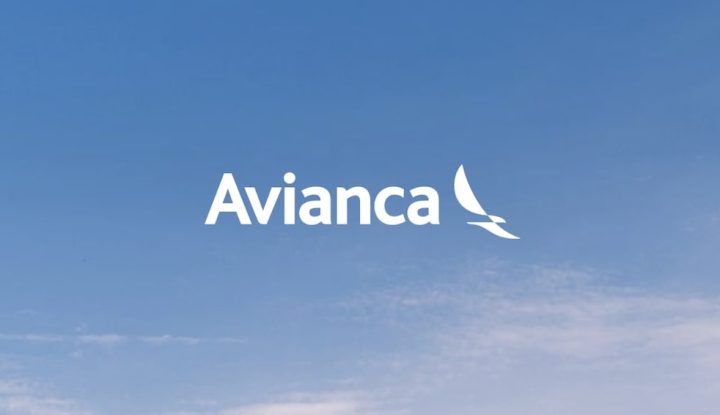
LOT Polish Airlines
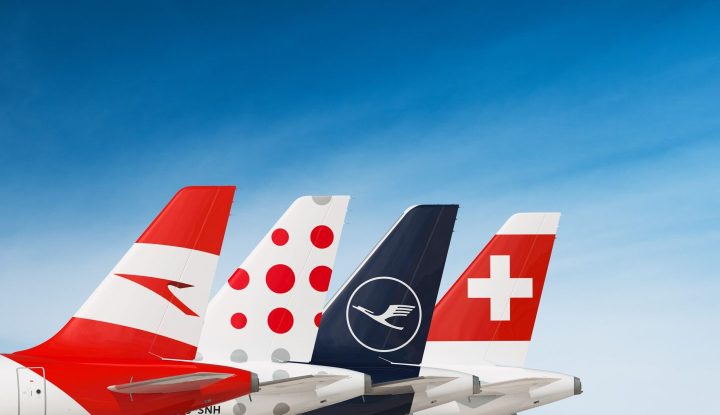
Lufthansa Group
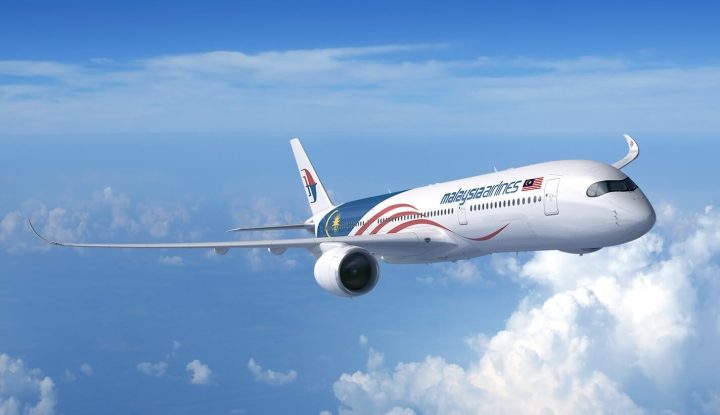
Malaysia Airlines
NDC offers are now live with Malaysia Airlines
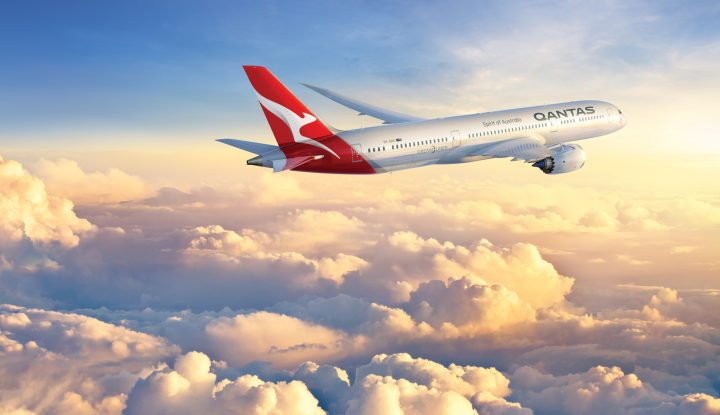
Qatar Airways
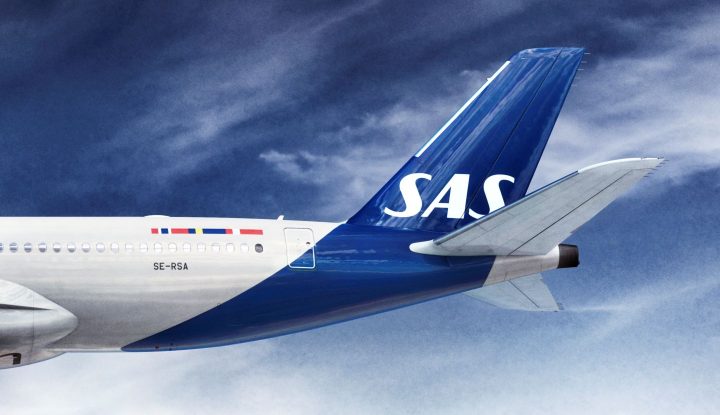
Scandinavian Airlines
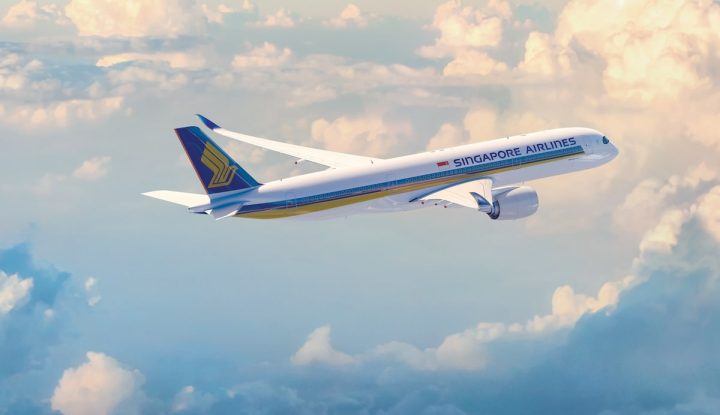
Singapore Airlines

United Airlines
Not a Sabre Customer?
Unlock new possibilities with us.
Optimize the business of travel
With seamless integration of NDC in GetThere, you can strike the right balance between personalization, policy and price. Which means you can maximize access to innovative content and give your corporate travelers the options they want, while keeping the control you need.

What can Beyond NDC do for your business?
In short, optimize your business travel. With a seamless integration of NDC in GetThere, you gain unprecedented control between personalization, policy and price. Which means you can meet each of your corporate travelers’ needs all at the same time, while creating travel options to deliver value on your terms. Improve your employees’ experience, while maintaining control of your program.
Sabre is currently the only global distribution system (GDS) to power NDC content for several leading corporate travel management tools, including: GetThere, SAP Concur and Atriis.

All the content you need, all in one place
Transform the way you create and distribute offers by getting the full spectrum of content right at your fingertips. Join the next generation of travel agents embracing NDC for travel.

What can Beyond NDC do for you?
As travelers seek better shopping and booking experiences, staying competitive and relevant is more important than ever. Our integrated workflow allows you to access NDC travel content through Sabre Red 360, GetThere, or your own API.
Plus, a full suite of capabilities to reduce retail turbulence and offer your travelers the best packages and fares available from our NDC airlines.
Realizing the value of NDC

Lee Fulford of CWT
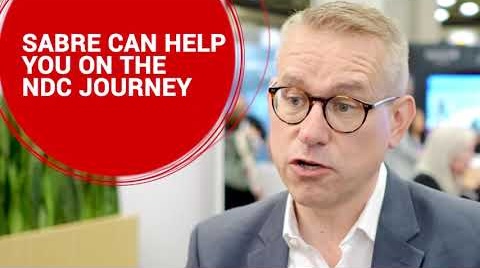
Geert deBoo of JTB
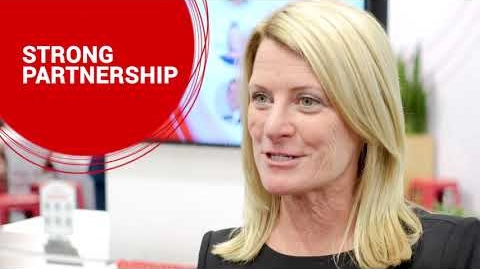
Charlene Leiss of Flight Centre Travel Group
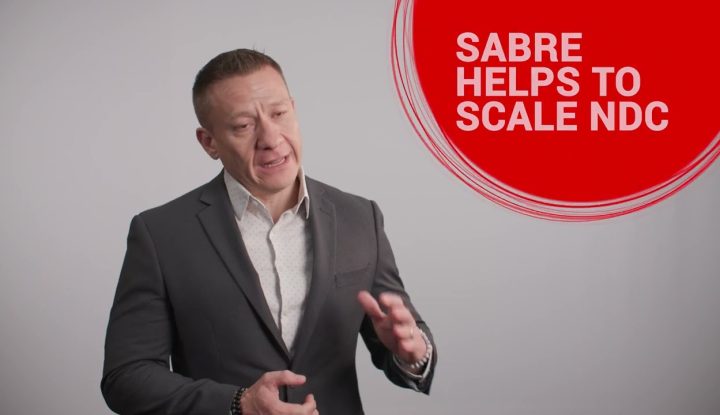
John Palomino of BCD Travel
Is New Distribution Capability new to you?
Here’s everything you need to know.
You handle the travel, we’ll handle the tech.

As a recognized, certified provider in IATA’s Airline Retailing Maturity index, we know what it takes to be your NDC IT provider – helping you power more personalized travel retailing to benefit the whole travel ecosystem.
More to explore
Everything you want and need to know about Beyond NDC.
Agencies & OTAs
April 25, 2024

National Travel selects Sabre distribution network to help better serve Federal Government Agencies
SOUTHLAKE, Texas – April 25, 2024 – Sabre Corporation (NASDAQ: SABR), a leading software and technology provider powering the global travel industry, today announced a new multi-year agreement with National Travel, a global travel agency ranked...
April 24, 2024
Sabre Space North America Empowers Travel Agency Innovation and Growth to Meet the Growing Demands of Digital-First Travel Landscape
Sabre Space North America Empowers Travel Agency Innovation and Growth to Meet the Growing Demands of Digital-First Travel Landscape SOUTHLAKE, Texas – April 24, 2024 – Sabre Corporation (NASDAQ: SABR), a leading software and technology provider...
April 11, 2024
Consolid Global Travel Solutions adopts Sabre payment and NDC solutions
SOUTHLAKE, Texas – April 11, 2024 – Sabre Corporation (NASDAQ: SABR), a leading software and technology provider powering the global travel industry, and Consolid Global Travel Solutions, a leading travel agency and tourism company in Latin America, announced today...

April 2, 2024
Beyond NDC supports multi-passenger offers
The reason for booking a trip usually informs how many people will be involved. Corporate travel often includes one adult, while leisure trips typically involve multiple adults, or families with young children in tow. Sabre’s NDC...

April 1, 2024
Booking NDC content is easy in the Sabre GDS. Here’s why.
Looking for more detail? Check out our resources for getting started with NDC: Don’t miss out on NDC updates from Sabre! Subscribe to stay up to date on news and fresh resources.
March 13, 2024
Sabre and Wooba expanding Sabre’s NDC adoption in the Americas to better serve travel agencies
SOUTHLAKE, Texas – March, 13, 2024 – Sabre Corporation (NASDAQ: SABR), a leading software and technology provider to the global travel industry, has partnered with Wooba, a prominent software development company based in Brazil, to provide...
February 29, 2024
Sabre and Atriis sign agreement to grow corporate NDC bookings
SOUTHLAKE, Texas, and TEL AVIV, Israel- Feb. 29, 2024 – Sabre Corporation (NASDAQ: SABR), a leading software and technology provider that powers the global travel industry announced a new agreement with managed travel technology company Atriis and...
February 28, 2024
Sabre is first GDS to power NDC for SAP Concur and the corporate travelers it serves
SOUTHLAKE, Texas, Feb. 28, 2024 – Sabre Corporation (NASDAQ: SABR), a leading software and technology provider that powers the global travel industry, is the first global distribution system (GDS) to provide New Distribution Capability (NDC) content to corporate...
Open a world of possibilities
With so much happening in travel right now, we think it’s the ideal time to start a conversation. Contact us today and let’s explore how we could work together.
Unsupported browser detected, for a better experience please upate to a newer version of Internet Explorer.
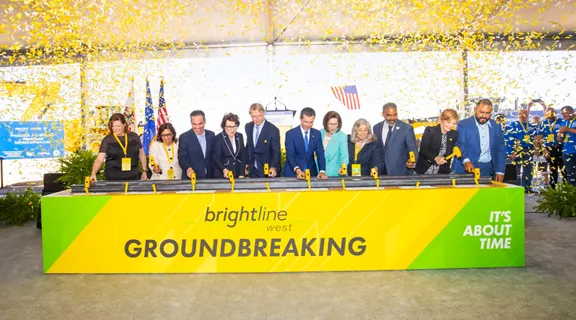
April 22, 2024
Making history: brightline west breaks ground on america’s first high-speed rail project connecting las vegas to southern california , officials hammer the first spike commemorating the groundbreaking for brightline west.
LAS VEGAS (April 22, 2024) – Today, Brightline West officially broke ground on the nation's first true high-speed rail system which will connect Las Vegas to Southern California. The 218-mile system will be constructed in the middle of the I-15 and is based on Brightline’s vision to connect city pairs that are too short to fly and too far to drive. Hailed as the greenest form of transportation in the world, Brightline West will run zero emission, fully electric trains capable of speeds of 200 miles per hour. Brightline West is a watershed project for high-speed rail in America and will establish the foundation for the creation of a new industry and supply chain. The project was recently awarded $3 billion in funding from President Biden’s Bipartisan Infrastructure Bill. The rest of the project will be privately funded and has received a total allocation of $3.5 billion in private activity bonds from USDOT.
The groundbreaking included remarks from U.S. Transportation Secretary Pete Buttigieg, Brightline Founder Wes Edens, Nevada Gov. Joe Lombardo, Sen. Catherine Cortez Masto, Sen. Jacky Rosen, Senior Advisor to President Biden Steve Benjamin and Vince Saavedra of the Southern Nevada Building Trades. In addition, Nevada Reps. Dina Titus, Susie Lee and Steve Horsford and California Reps. Pete Aguilar and Norma Torres made remarks and joined the celebration. More than 600 people, including union representatives, project supporters and other state and local officials from California and Nevada, attended the event.
“People have been dreaming of high-speed rail in America for decades – and now, with billions of dollars of support made possible by President Biden’s historic infrastructure law, it’s finally happening,” said Secretary Buttigieg. “Partnering with state leaders and Brightline West, we’re writing a new chapter in our country’s transportation story that includes thousands of union jobs, new connections to better economic opportunity, less congestion on the roads, and less pollution in the air.”
“This is a historic project and a proud moment where we break ground on America’s first high-speed rail system and lay the foundation for a new industry,” said Wes Edens, Brightline founder. “Today is long overdue, but the blueprint we’ve created with Brightline will allow us to repeat this model in other city pairs around the country.”
CONSTRUCTION OF BRIGHTLINE WEST
Brightline West's rail system will span 218 miles and reach speeds of 200 mph. The route, which has full environmental clearance, will run within the median of the I-15 highway with zero grade crossings. The system will have stops in Las Vegas, Nev., as well as Victor Valley, Hesperia and Rancho Cucamonga, Calif.
The privately led infrastructure project is one of the largest in the nation and will be constructed and operated by union labor. It will use 700,000 concrete rail ties, 2.2 million tons of ballast, and 63,000 tons of 100% American steel rail during construction. Upon completion, it will include 322 miles of overhead lines to power the trains and will include 3.4 million square feet of retaining walls. The project covers more than 160 structures including viaducts and bridges. Brightline West will be fully Buy America Compliant.
STATIONS AND FACILITIES
Brightline West will connect Southern California and Las Vegas in two hours or almost half the time as driving. The Las Vegas Station will be located near the iconic Las Vegas Strip, on a 110-acre property north of Blue Diamond Road between I-15 and Las Vegas Boulevard. The site provides convenient access to the Harry Reid International Airport, the Las Vegas Convention Center and the Raiders’ Allegiant Stadium. The station is approximately 80,000 square feet plus parking.
The Victor Valley Station in Apple Valley will be located on a 300-acre parcel southeast of Dale Evans Parkway and the I-15 interchange. The station is intended to offer a future connection to the High Desert Corridor and California High Speed Rail. The Victor Valley Station is approximately 20,000 square feet plus parking.
The Rancho Cucamonga Station will be located on a 5-acre property at the northwest corner of Milliken Avenue and Azusa Court near Ontario International Airport. The station will be co-located with existing multi-modal transportation options including California Metrolink, for seamless connectivity to Downtown Los Angeles and other locations in Los Angeles, Orange, San Bernardino and Riverside Counties. The Rancho Cucamonga Station is approximately 80,000 square feet plus parking.
The Hesperia Station will be located within the I-15 median at the I-15/Joshua Street interchange and will function primarily as a local rail service for residents in the High Desert on select southbound morning and northbound evening weekday trains.
The Vehicle Maintenance Facility (VMF) is a 200,000-square-foot building located on 238 acres in Sloan, Nev., and will be the base for daily maintenance and staging of trains. This site will also serve as one of two hubs for the maintenance of way operations and the operations control center. More than 100 permanent employees will report on a daily basis once operations begin and will serve as train crews, corridor maintenance crews, or operations control center teammates. A second maintenance of way facility will be located adjacent to the Apple Valley station.
The Las Vegas and Southern California travel market is one of the nation’s most attractive corridors with over 50 million trips between the region each year. Additionally, Las Vegas continues to attract visitors from around the world, with 4.7 million international travelers flying into the destination. The city dubs itself on being the world’s No. 1 meeting destination, welcoming nearly 6 million people to the Las Vegas Convention Center last year.
In California, approximately 17 million Southern California residents are within 25 miles of the Brightline West station sites. Studies show that one out of every three visits to Las Vegas come from Southern California.
ECONOMIC & ENVIRONMENTAL BENEFITS
Brightline West's $12 billion infrastructure investment will create over $10 billion in economic impact for Nevada and California and will generate more than 35,000 jobs, including 10,000 direct union construction roles and 1,000 permanent operations and maintenance positions. The investment also includes over $800 million in improvements to the I-15 corridor and involves agreements with several unions for skilled labor. The project supports Nevada and California's climate goals by offering a no-emission mobility option that reduces greenhouse gasses by over 400,000 tons of CO2 annually – reducing vehicle miles traveled by more than 700 million each year and the equivalent of 16,000 short-haul flights. The company will also construct three wildlife overpasses, in partnership with the California Department of Fish and Wildlife and Caltrans for the safe passage of native species, primarily the bighorn sheep.
BRIGHTLINE FLORIDA
Brightline’s first rail system in Florida connecting Miami to Orlando began initial service between its South Florida stations in 2018. In September 2023, Brightline’s Orlando station opened at Orlando International Airport, connecting South Florida to Central Florida. The company has plans to expand its system with future stops in Tampa, Florida’s Space Coast in Cocoa and the Treasure Coast in Stuart.
BRIGHTLINE WEST
ABOUT BRIGHTLINE WEST
Brightline is the only private provider of modern, eco-friendly, intercity passenger rail service in America – offering a guest-first experience designed to reinvent train travel and take cars off the road by connecting city pairs and congested corridors that are too short to fly and too long to drive. Brightline West will connect Las Vegas and Southern California with the first true high-speed passenger rail system in the nation. The 218-mile, all-electric rail service will include a flagship station in Las Vegas, with additional stations in Victor Valley and Rancho Cucamonga. At speeds up to 200 miles per hour, trains will take passengers from Las Vegas to Rancho Cucamonga in about two hours, twice as fast as the normal drive time.
Brightline is currently operating its first passenger rail system connecting Central and South Florida with stations in Miami, Aventura, Fort Lauderdale, Boca Raton, West Palm Beach, and Orlando, with future stations coming to Stuart and Cocoa. For more information, visit www.brightlinewest.com and follow on LinkedIn , X , Instagram and Facebook .
QUOTE SHEET
“Through this visionary partnership, we are going to create thousands of jobs, bring critical transportation infrastructure to the West, and create an innovative, fast, and sustainable transportation solution. Nevada looks forward to partnering with Brightline on this historic project.” - Governor Joe Lombardo, Nevada
“Today, not only are we breaking ground on a historic high-speed rail project here in Nevada, we are breaking ground on thousands of good paying American jobs, union jobs.” - Steve Benjamin, Senior Advisor to the President and Director of the White House Office of Public Engagement
“For decades, Nevadans heard about the promise of high-speed rail in our state, and I’m proud to have led the charge to secure the funding to make it a reality. Today’s groundbreaking is the beginning of a new era for southern Nevada -- creating thousands of good-paying union jobs, bringing in billions of dollars of economic development, enhancing tourism to the state, reducing traffic, and creating a more efficient and cleaner way to travel. This is a monumental step, and I’m glad to have worked across the aisle to make this project come true.” - Senator Jacky Rosen (D-NV)
“Having high-speed rail in Las Vegas will electrify our economy in Southern Nevada, and I’m thrilled to celebrate this milestone today. This project is on track to create tens of thousands of good-paying union jobs while cutting down traffic on I-15, and I’ll keep working with the Biden Administration to get this done as quickly as possible and continue delivering easier and cleaner transportation options for everyone in Nevada.” - Senator Catherine Cortez Masto (D-NV)
“Today’s groundbreaking is a historic step in modernizing rail service in the United States. Californians driving between the Los Angeles region and Las Vegas often face heavy traffic, causing emissions that pollute the air in surrounding communities. The Brightline West Project will provide travelers with more options—helping Californians and visitors alike get to their final destination without facing gridlock on the road.” - Senator Alex Padilla (D-Calif.)
"High-speed rail in the Southwest has been a dream as far back as the nineties when Governor Bob Miller appointed me to the California-Nevada Super Speed Train Commission. As a senior Member of the House Transportation & Infrastructure Committee, I am honored to have helped write the Bipartisan Infrastructure Law and secure $3 billion to turn that dream into a reality which will generate millions of dollars in tax revenue, reduce carbon emissions by easing traffic on Interstate 15, and create thousands of good-paying union jobs. I am proud to stand with advocates and transportation leaders as we break ground on the Brightline West project and look forward to welcoming high-speed passenger rail to Southern Nevada." - Congresswoman Dina Titus (NV-1)
“For decades, high-speed rail was just a dream in southern Nevada – but now, I’m beyond proud that we finally made it a reality. I worked across the aisle to help negotiate, craft, and ultimately pass the Bipartisan Infrastructure Law because I knew it would kickstart transformative projects like Brightline West that will stand the test of time. Together, we’re cutting down on traffic, boosting our tourism economy, and creating thousands of good-paying union jobs.” - Congresswoman Susie Lee (NV-3)
“I am proud to join Brightline West for the groundbreaking of this monumental project for Southern Nevada and the southwestern United States. By connecting Las Vegas to Southern California via high-speed rail, we will boost tourism, reduce congestion on the I-15 corridor, and create jobs. The impact on our local economy and the people of the Silver State will be tremendous. In my conversations with Secretary Buttigieg, Brightline West, and our Nevada labor leaders, I know that local workers and our Nevada small businesses will benefit from this transformational investment. This will be the nation's first true high-speed rail system, blazing a new path forward for our nation’s rail infrastructure, and we hope it will serve as a blueprint for fostering greater regional connections for many other cities across the country. - Congressman Steven Horsford (NV-4)
“Brightline West’s groundbreaking today marks the construction of a dynamic high-speed rail system that will link Las Vegas, Hesperia, and Apple Valley to Rancho Cucamonga’s Metrolink Station, creating new jobs and fostering economic growth in California’s 23rd Congressional District. This convenient alternative to driving will reduce the number of cars on the road, decreasing emissions and reducing congestion in our High Desert communities. This is an exciting step and I look forward to the completion of this project.” - Congressman Jay Obernolte (CA-23)
"Today's groundbreaking on the Brightline West high-speed rail project marks an incredible milestone in the Biden-Harris Administration's commitment to fulfilling the promise of high-speed rail and emissions-free transportation across the country. As a longtime supporter of this project, I helped pass the Bipartisan Infrastructure Law, which has already invested over $3 billion to support the completion of this project. By increasing transportation options, spurring job creation and new economic opportunities, and improving our environment through cutting over 400,000 tons of carbon pollution each year, this project will be transformative to my district and all of Southern California for generations—particularly in and around the last stop in Rancho Cucamonga. With the goal of being operational in time for Los Angeles to host the Summer Olympic Games in 2028, I look forward to Brightline West facilitating travel for the millions visiting our region and elevating our 21st-century connectivity on the global stage." - Congresswoman Judy Chu (CA-28)
"As the Member of Congress that represents the City of Rancho Cucamonga and a member of the House Appropriations Subcommittee on Transportation, Housing, and Urban Development, it is my honor to participate in breaking ground on one of the most highly anticipated high-speed rail projects in the country. We gathered today thanks to the Biden Administration's leadership, which enacted the Bipartisan Infrastructure Law and the Inflation Reduction Act to fund vital projects like this and transform our economy. The Brightline project is a stellar illustration of the power of successful public-private partnerships. Thanks to all the labor unions, Tribes, and wildlife advocates for their hard work, which brought this project to life. The bright line is fully electric and has zero emissions, which is excellent for our environment. I am eagerly anticipating the completion of this project in my district and look forward to seeing everyone there." - Congresswoman Norma J. Torres (CA-35)
Media Contact
Vanessa Alfonso [email protected]

Map Shows New California High-Speed Rail Routes
A series of maps show the full extent of California's proposed high-speed rail routes that would provide an efficient and quick way of travel between the state's major cities.
Renewed interest has surfaced in high-speed rail travel after Brightline West, a new all-electric, 218-mile rail line bringing passengers from Las Vegas, Nevada, to Rancho Cucamonga, California , broke ground on Monday after construction was delayed for several years.
The project is expected to be completed before the 2028 Olympics in Los Angeles. The California High-Speed Rail Authority has another rail line planned that would provide a trip from San Francisco to Los Angeles in less than three hours, but progress has been slow.
According to maps on the Rail Authority's website, the proposed high-speed rail line would traverse three regions—northern, central and southern California.
"The Phase 1 system will connect San Francisco to the Los Angeles basin via the Central Valley in under three hours on trains capable of exceeding 200 miles per hour," the website said. "Phase 2 will extend to Sacramento and San Diego."
A spokesperson for the Authority told Newsweek that the project is at an "exciting time." There are 171 miles of rail line under construction, and there is environmental clearance for 422 miles.
"In the last year alone, the Authority has been awarded $3.3 billion in new federal funds to advance the work on the initial operating segment between Merced and Bakersfield, signifying a renewed federal partnership," the statement said.
Northern California project
There are two legs to the northern California project. Phase 1 involves creating a high-speed rail line from San Francisco to Merced, with stops in between at Millbrae-SFO, San Jose and Gilroy. Phase 2 would bring travelers from Sacramento to Merced with stops at Stockton and Modesto.
For the San Francisco to San José leg of the journey, the Authority plans to introduce high-speed rail service to the Caltrain corridor. Environmental clearance was completed in 2022, and construction of the Caltrain electrification is under way.
Environmental clearance also was completed for the San José to Merced leg.
"Electrifying the existing rail corridor from San José to Gilroy will modernize the rail corridor for electrified high-speed rail service and allow Caltrain to extend electrified service to southern Santa Clara County," the website said.
Central California project
The middle stint of the statewide project travels from Merced to Bakersfield with rail stations at Fresno and Kings/Tulare. Construction is most promising in this segment.
"The electrified high-speed rail line between Merced and Bakersfield is the first building block of the statewide system. This 171-mile line will offer the nation's first true electrified high-speed rail service," the Authority said on its website.
The spokesperson told Newsweek that this leg of the project is expected to be completed by 2030 to 2033.
Southern California project
The southern California stint also involves two phases. Phase 1 would bring travelers from Bakersfield to Anaheim with stops in Palmdale, Burbank and Los Angeles. Phase 2 would travel from Los Angeles to San Diego with stops at San Bernardino and Riverside. The southern California map also shows the Brightline West route.
The statewide project has been plagued with delays and price jumps. Voters approved the project in 2008, KTLA reported, with Phase 1 taking travelers from San Francisco to Los Angeles. At the time, the project was anticipated to be operational by 2020 and cost $33 billion.
Four years past the deadline, the project is still far from being completed and the price has jumped to $128 billion.
"The full Los Angeles to San Francisco line completion date is contingent on federal funding," the spokesperson told Newsweek .
According to a U.S. House testimony by Lee Ohanian, a UCLA professor and Stanford University fellow, California began its journey to high-speed rail in 1993 by creating the California Intercity High-Speed Rail Commission. Three years later, the commission was replaced by the California High-Speed Rail Authority.
"California's HSR project has little to show over this 30-year period. The project is significantly delayed, and its budget has increased to about four times its initial cost. Some of this is due to mistakes in planning, management, oversight, and accountability," Ohanian testified.
"But other factors reflect more endemic challenges in building HSR, including limitations in understanding the scope and size of the problems and risks that can arise in such a major infrastructure project."
Related Articles
- Video Shows Alaska Plane Burst Into Flames Before Fatal Crash
- These Companies Are Charging Ahead to Help Make an EV Transition Possible
- Gas Hits Almost $7 Near US Border
- My Homeless Brother's Real Problem Wasn't a Lack of Shelters
Start your unlimited Newsweek trial
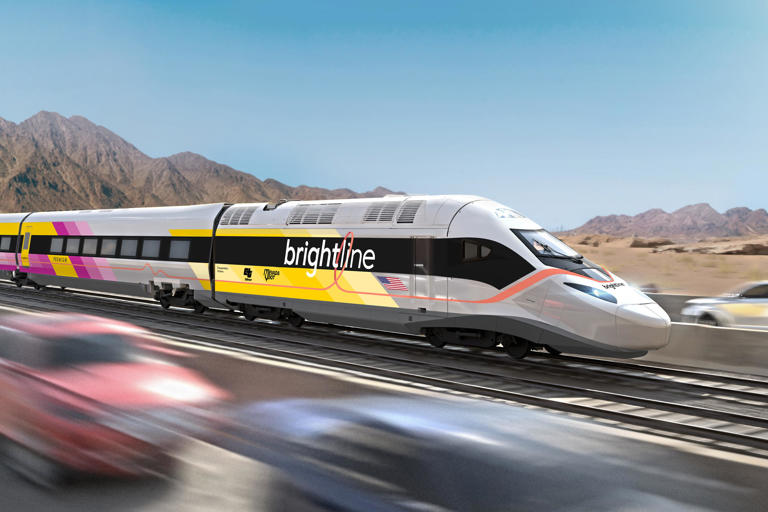

Mission Trail Waste Systems
Mission trail waste systems provides residential, commercial and industrial collection services for trash, recycling and organics. we are the franchised hauling company for portions of the city of santa clara, and the entire city of los altos., our transfer station accepts trash and recyclables from santa clara and los altos as well as from other jurisdictions and is open to the general public., for details, please click on the appropriate section below..
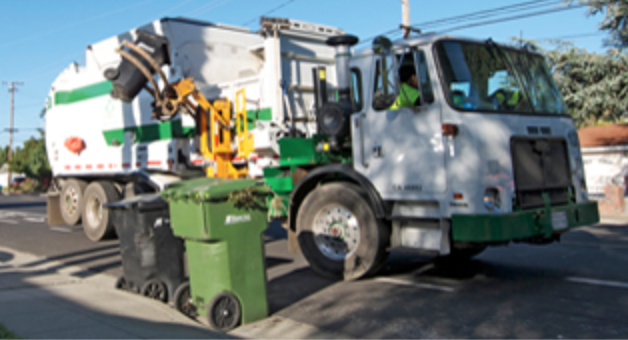
SANTA CLARA
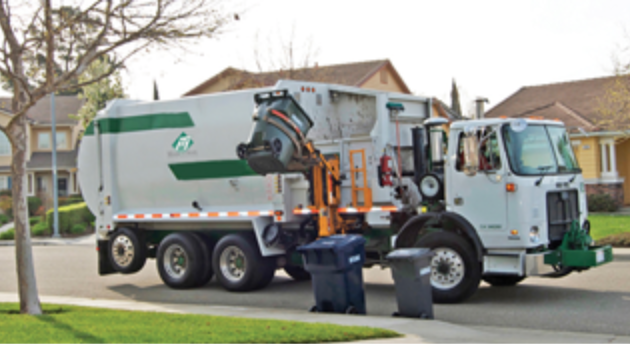
TRANSFER STATION
Service areas.
- Santa Clara
- Transfer Station
VTA First-Time Transit Rider Guide
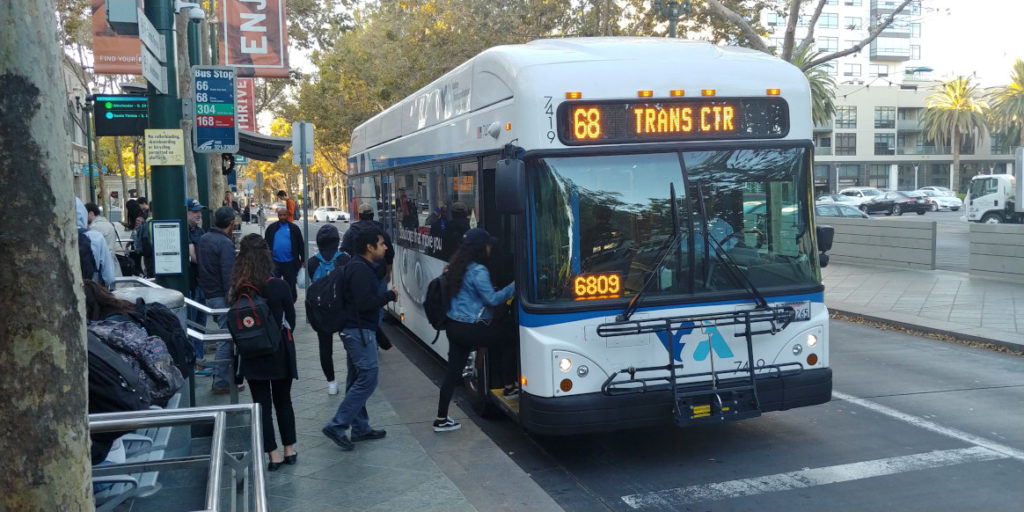
Table of Contents
Mobile phone apps, after vta customer service closes, in person (downtown san jose), how to read a bus schedule, at the bus stop…, how to board a vta bus, boarding a vta bus with your bicycle, how to pay your vta bus fare, basic rules for riding (boarding) any vta bus, how to get off (alighting) from a vta bus, transferring to another bus line, transferring to vta light rail, transferring to commuter or intercity bus or rail services, know before you board, reading the vta light rail schedule, paying vta light rail fare, at the vta light rail station, boarding vta light rail, making room for other people aboard vta light rail, exiting (alighting) vta light rail, transferring to another vta light rail train, commuter rail and intercity rail, commuter bus, inter-county bus, and intercity bus, community buses, connection timing rules between vta and these buses.
Are you visiting, recently moved to or started working in Silicon Valley? New to taking public transportation in the Valley? Taking a Santa Clara Valley Transportation Authority ( VTA ) bus or light rail train can be intimidating for someone riding public transit for the very first time.
This guide will detail the steps you need to make your first trip riding a VTA bus or light rail train as pleasant as possible. It will also detail how to make future trips equally as rewarding and pleasant for yourself – and fellow passengers.
A special “Thank You” must go to San Jose State University’s Transportation Solutions Department for providing all of the basic tips found in this guide.
Note that this guide written independent of VTA. VTA gave us no help whatsoever in the creation of this guide. Please do not contact VTA about particulars in this guide.
Back to Top
Know Before You Go
Not sure which VTA bus or light rail train to take? Not sure when VTA buses or light rail are running and how often? Not sure about how much VTA bus and light rail fares cost? There are several ways you can contact VTA to obtain this information.
By Computer (Online)
VTA has a web site. www.vta.org , available 24 hours/day where you can access public transit information for Santa Clara County.
Also, use VTA’s Online Trip Planner to help plan your bus or light rail trip online. It’s quick and easy. If possible, use the save function or print out the information for your trip reference.
For the entire San Francisco Bay Area, a web site maintained by the Metropolitan Transportation Commission ( MTC) has regional public transit and traffic information. That site, www.511.org , is available 24 hours/day. When visiting the site, click the “Transit” button to obtain public transit information.
Have a smart phone or tablet? Download and install the Transit “app” before you go. The “app” will help you plan your trip, inform you of departure times, and remind you which stop to get off on your bus trip. After downloading the “app” on your smart phone, follow its instructions for its use for the VTA in Santa Clara County.
As of February 2023, VTA has upgraded Transit app users to the Transit Royale platform. Here’s more information from VTA on what Transit Royale does for its users.
Also, you are strongly encouraged to use the Clipper Card app to help pay your bus and/or light rail fare. It will help ease paying transit fares, and speed your trip.
Both the “Transit” app and Clipper Card app are available at the Apple Store or Google Play . Download them and install them on your smart phone (or tablet) today, to help you ride and pay fare on VTA.
By Telephone
Don’t have access to a computer or smartphone? Another way to contact VTA for information is by telephone at (408)321-2300. As of October 2018, VTA’s Customer Service call center hours are
- Monday-Friday from 6am-7pm
- Saturdays from 7:30am-4pm
- Closed Sundays and major holidays
Information is available in English, Spanish, and several other languages. When calling, listen to the voice prompt and dial the number for which language you want the information in.
Have a pencil (or pen) and paper ready to write down the information for your trip. Make sure to note as much information as you can, to make your bus trip easier.
When calling, tell the Customer Service operator:
- Where you are coming from (your exact address, landmark, shopping mall, school, etc.) to start your trip
- Where you are going (exact address, major intersection, landmark, shopping mall, school, etc.)
- What time and date you want to go (be as exact as possible)
The VTA Customer Service operator will tell you:
- the closest bus or light rail stop (typically near the corner of an intersection, or a transit center)
- bus and/or light rail route(s) and destination(s)
- where to get off the bus or light rail train
- How much the transit ride will cost, one-way and round trip.
If the operator does not provide this information for you up front, ask for this information during the call.
Need public transit information when VTA Customer Service is closed for the day? Below are two ways to obtain transit information.
Got a computer or smart phone? Visit VTA’s web site for public transit information. Alternately, use VTA’s online trip planner to help you plan your trip.
Can’t access a computer or smart phone? From any telephone in the San Francisco Bay Area, dial 511 – the San Francisco Bay Area’s public transit and traffic information number. When prompted, say “Departure Times” then follow the voice prompts afterward to obtain the public transit information you need.
VTA has a Customer Service Center at 55-A West Santa Clara Street (east of North 1st Street) in downtown San Jose. They are open from 9am-6pm on weekdays only. The In-Person Center is closed on weekends and major holidays.
How To Ride VTA Buses
VTA operates several types of bus services throughout Santa Clara County. Unless otherwise noted, standard fare for non-Express VTA bus lines applies.
Newer VTA buses and the Winchester (Campbell), Alum Rock (East San Jose), and Ohlone-Chynoweth (South San Jose) transit centers have wireless internet access available. Here’s how to use VTA’s public Wi-Fi network, where available . (Information is as of November 2021)
“Local” VTA bus service ( bus route numbers 1-99 )
- has bus stops closely spaced together
- typically serve a small area, connecting transit centers and rail stations to the surrounding community, a downtown area, or major destinations
- use 35-foot or 40-foot (standard) size buses depending on time of day and ridership patterns.
- historically high-ridership bus lines like the 22 along El Camino Real use 60-foot “articulated” buses.
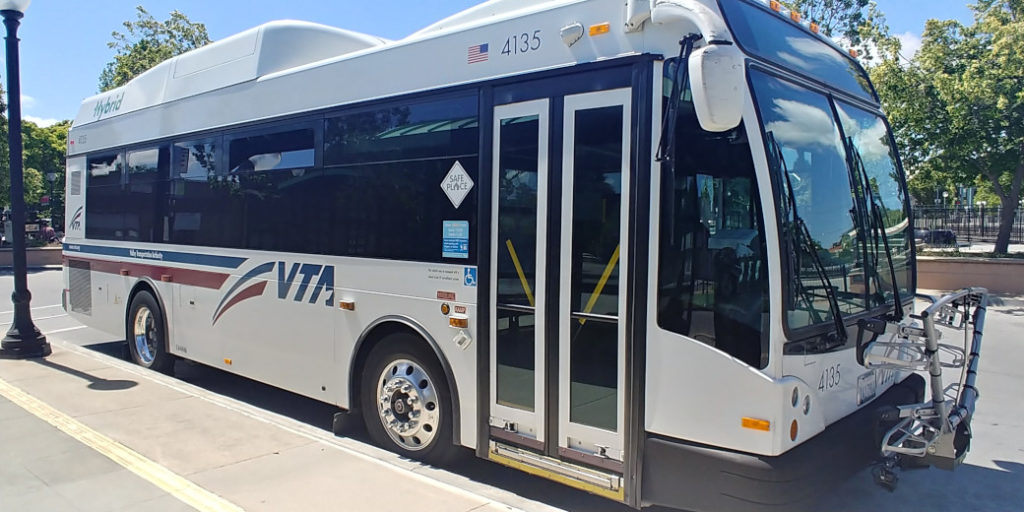
“Frequent” VTA bus service ( bus route numbers 1-99; also applies to “Rapid” buses )
- share many of the same attributes as “Local” bus service
- run every 15 minutes or sooner on Mondays-Fridays from 6:30am-6:30pm
- run every 15-30 minutes on Saturdays, Sundays, and major holidays+
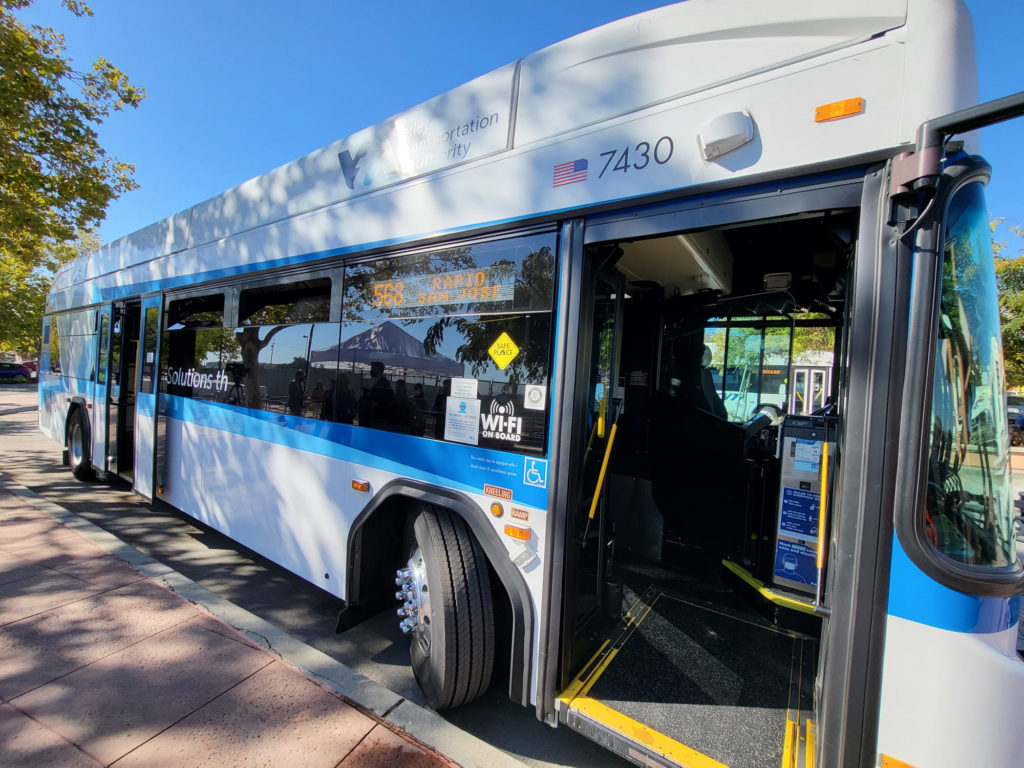
“Rapid” VTA bus service ( bus route numbers 500-599 – often formerly known as “Limited Stop” bus service )
- has the same frequency as “frequent” VTA bus lines
- can leave bus stops up to 5 minutes earlier than scheduled time, as traffic allows
- make only a fraction of bus stops than local bus lines they run alongside (Example: 68 between SJ-Gilroy makes 95 stops, while the 568 Rapid bus between the same cities makes only 19 stops.)
- provide more timed & extensive connections at transit centers
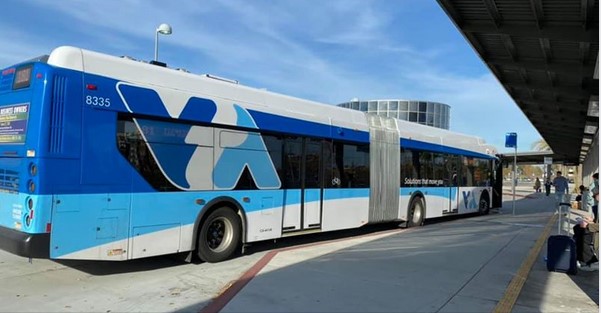
“Express” VTA bus service (bus route numbers 100-199)
- adult fares are double that of standard VTA fares; Youth and Senior/Disabled passengers pay their standard fares
- run only on weekday peak periods. They do not run on weekends nor holidays.
- stop only at transit centers, industrial parks, park-and-ride lots, and major intersections
- operate to industrial parks in the morning only
- operate from industrial parks in the evening only
- operate mainly on freeways (state, Interstate, and U.S.) within Santa Clara County
- typically use “ suburban style ” buses that also have individual reading lights and Wi-Fi capability on-board
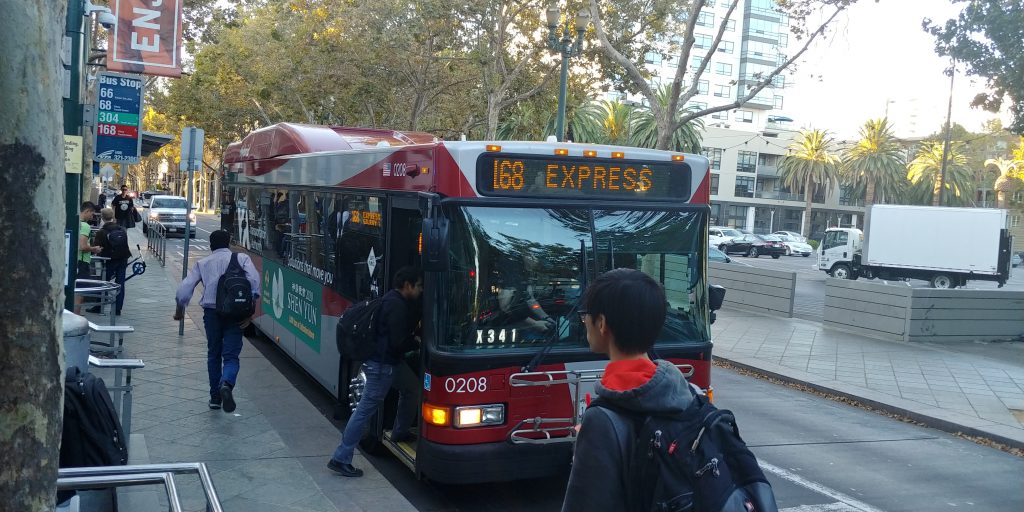
On school days, VTA “ school trippers ” are special services that typically operate to and from public elementary or high schools throughout Santa Clara County. Route numbers for school trippers are in the 200-299 range. School tripper service operates:
- to school in the morning
- from school in the afternoon after school dismisses for the day
- same service philosophy as “Local” bus service
Here is a list of all current VTA bus and light rail lines, and their operating schedules .
All bus schedules are read from left to right. Most routes go in two directions (north/south or east/west). The origin and the destination are indicated in the timetables. Not all bus stops are listed on the schedule. The bus stops listed are called timepoints . The timepoints are also identified in the route maps.
A photo showing an example bus schedule is below.
- Find the time point (column) for your starting point or closest to and before your starting point. For instance, you live one block from Main and Hale, so you would use the Main and Hale time point.
- Go down the column underneath the time point to find the time closest to when you want to catch the bus. Using the example bus schedule, you want to leave Main and Hale by bus at 2pm. However, the next bus is schedule to leave at 2:08pm.
- If you need to be somewhere by a certain time, find the time point closest to where you are going and what time the bus will arrive there. Work your way back to where you will begin your trip to find out what time you will need to get on the bus. For instance, you want to be at Burnett Avenue by 8:30am for an appointment. The closest time for bus arrival at Burnett Avenue is 7:53am. If you are taking the bus from Main and Hale, you would need to catch the bus due to depart Main and Hale at 7:28am.
We recommend arriving at a bus stop at least five minutes before the time shown on the timetable. This allows time to gather the exact fare or transit pass you will need to pay to board the bus.
VTA bus stops are marked by a blue sign on top of a metal pole. The blue sign will have the bus route number(s), operating frequency, and destination(s) posted on them. They also have VTA’s Customer Service telephone number for any questions you have on this or any other VTA bus or light rail service you wish to use.
Other public transit information, such as arrival times and service updates, is also available by dialing “511” from your mobile telephone. Dial in the five-digit ID number on the bus stop sign for information on arrival times and any delays for the bus you wish to take.
Some VTA bus stops have benches to sit on while you wait. Some VTA bus stops even have shelters to protect you from the elements while you wait.
Some examples of VTA bus stop signs are below.
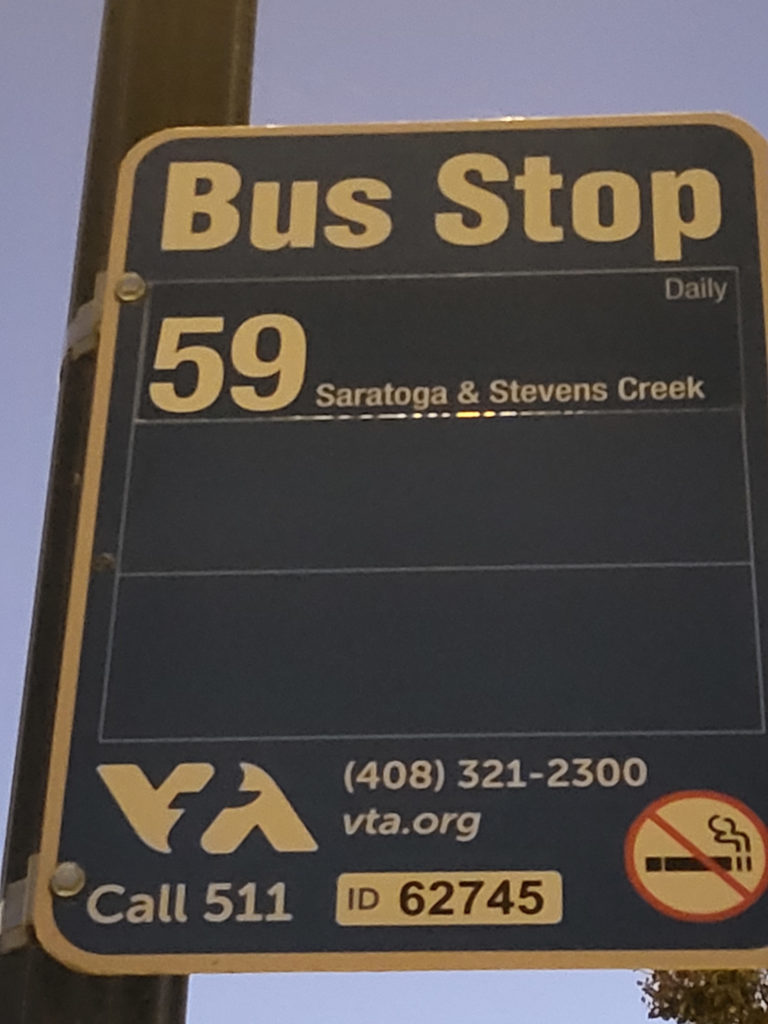
In other words…
- White text on a BLUE background – stop for a “local” bus line
- White text on a RED background – stop for a “frequent” or “rapid” bus line
- White text on a GREEN background – stop for an “express” bus line
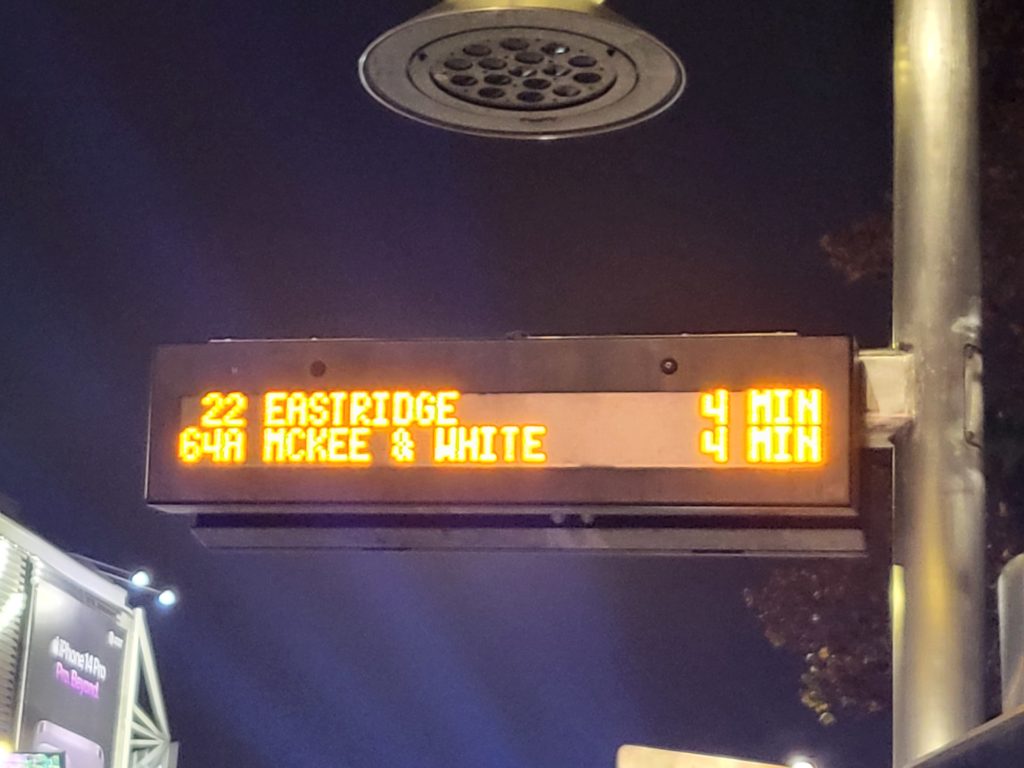
Note that a VTA bus stop may serve more than one bus line. Also note: some VTA bus lines do not stop at all bus stops. It is important that you wait at the correct stop for the correct bus and direction you want to ride. See the above section explaining VTA bus service types , as of November 2021.
Major VTA bus stops and transit centers have electronic real-time boards showing the bus line and estimated time of the next arriving bus. A photo showing what one of these real-time bus arrival displays looks like is below.
The real-time bus arrival signs first show the current time and date. Then, it will scroll to show the bus line, final destination, and estimated time of arrival at the stop, up to one (1) hour later.
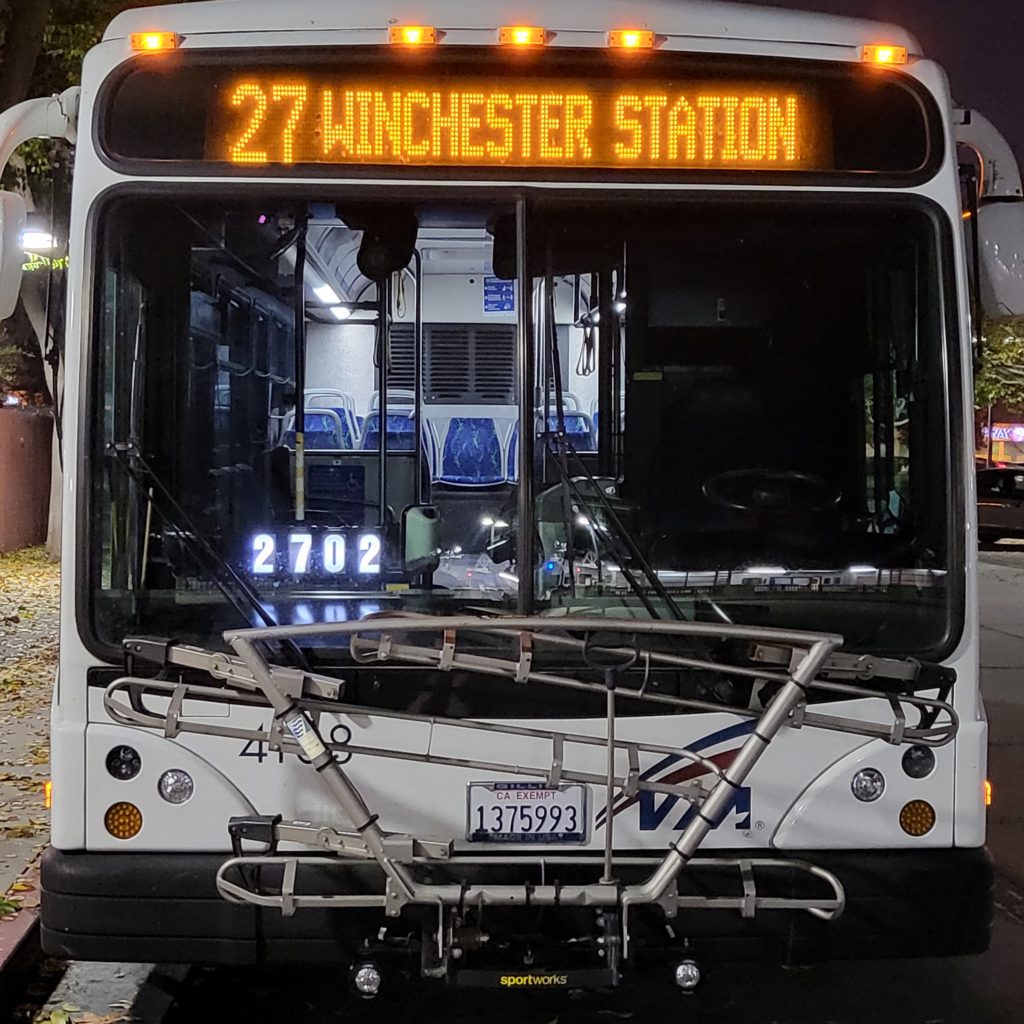
Every VTA bus has its line number and final destination displayed above the windshield, next to the front door, and on the driver’s side of the bus. The bus line number is always displayed at the right rear side of all buses.
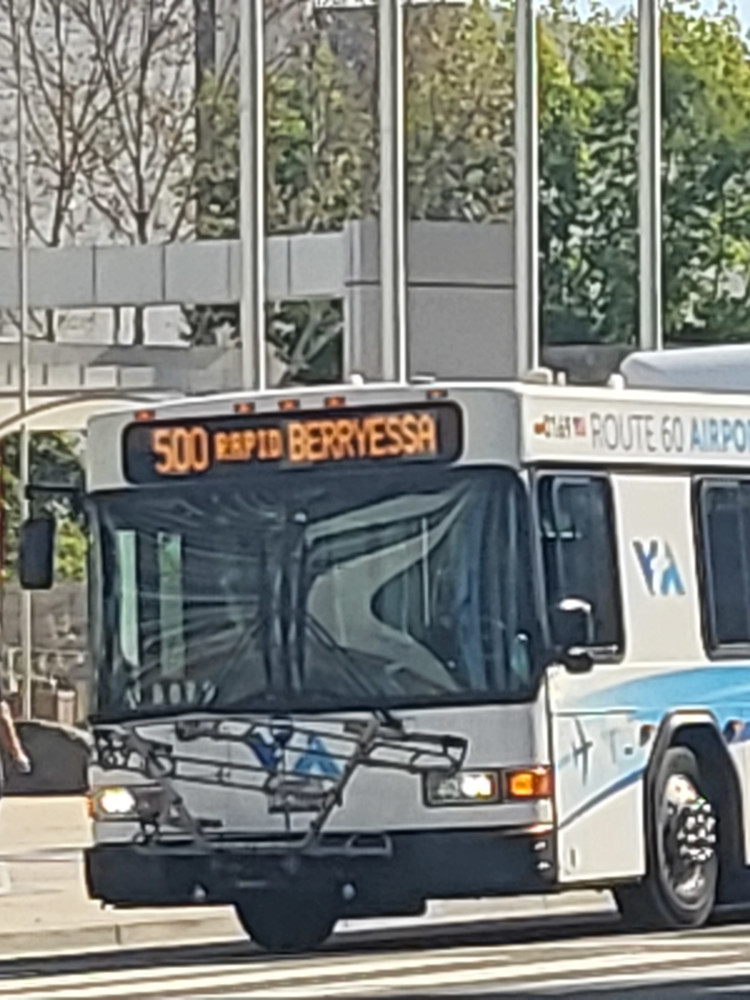
Sometimes, VTA uses buses branded for certain bus routes or services on other routes, due to equipment availability. Make sure to check the front destination sign above the windshield for the correct bus and route. If you are still in doubt, ask the bus driver.
When you see an approaching bus with the correct route and destination, signal the driver by standing near the curb and pointing to the street with either your left arm or right arm. Wait until the bus comes to a complete stop before boarding through the front door.
Riding your bicycle and want to take a VTA bus to where you need to be? This video from VTA’s Bicycle and Pedestrian Advisory Committee from 2009 shows you how to load your bicycle on to the bike rack of any VTA bus.
As a courtesy, allow the elderly, the disabled, or pregnant women to depart the bus from the front door first. If there are any elderly, disabled, or pregnant women boarding the bus afterward, let these people board first.
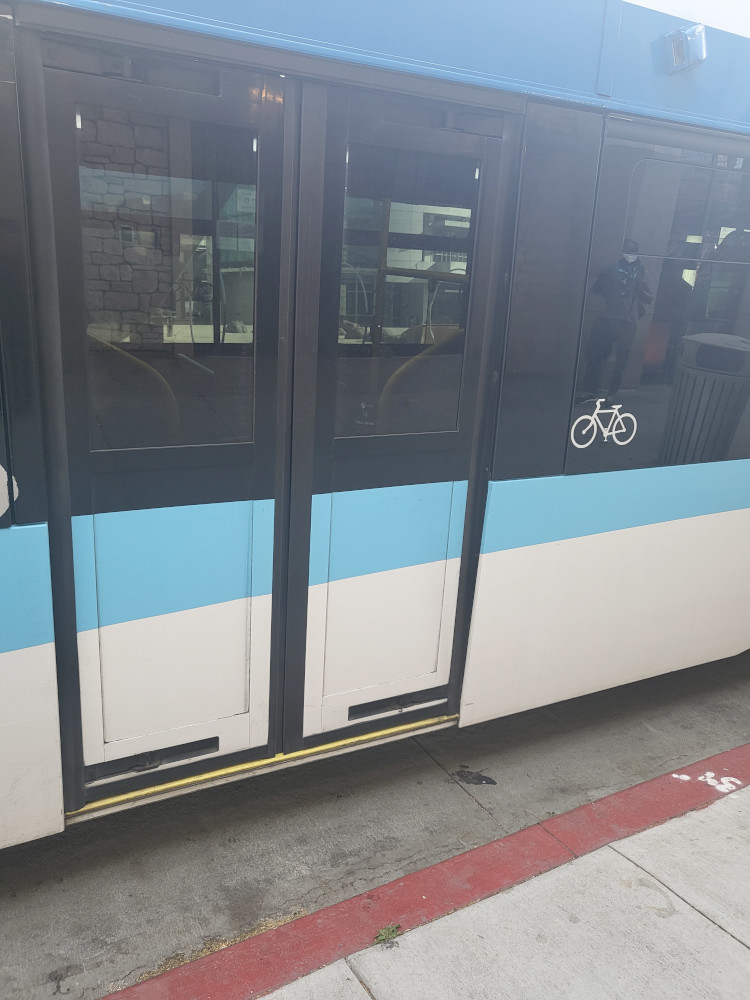
VTA 60-foot articulated buses have a second location to store your bicycle – at the back exit of the bus. To board such a bus, let the bus driver know you are boarding your bicycle at the rear of the bus. If you have cash or a paper pass, make sure to pay your fare at the farebox in front of the driver first. Otherwise, board with your bicycle at the back exit of the bus, tag your Clipper Card at the card reader on the right after you enter, and mount your bicycle on one of the two racks to the right as you enter the bus.
If you have a bicycle on the racks at the front of your VTA bus, let the driver know you have a bicycle in front of the bus, before you exit. This way, the bus driver can safely stop and allow you to remove your bicycle from the rack on the front of the bus.
This chart details VTA bus fares by bus type, and age range. Pay your cash fare inside the fare box at the front of the bus. The photo below shows what a fare box aboard all VTA buses resembles.
VTA has a video detailing how to pay cash fare for the fare boxes aboard its buses.
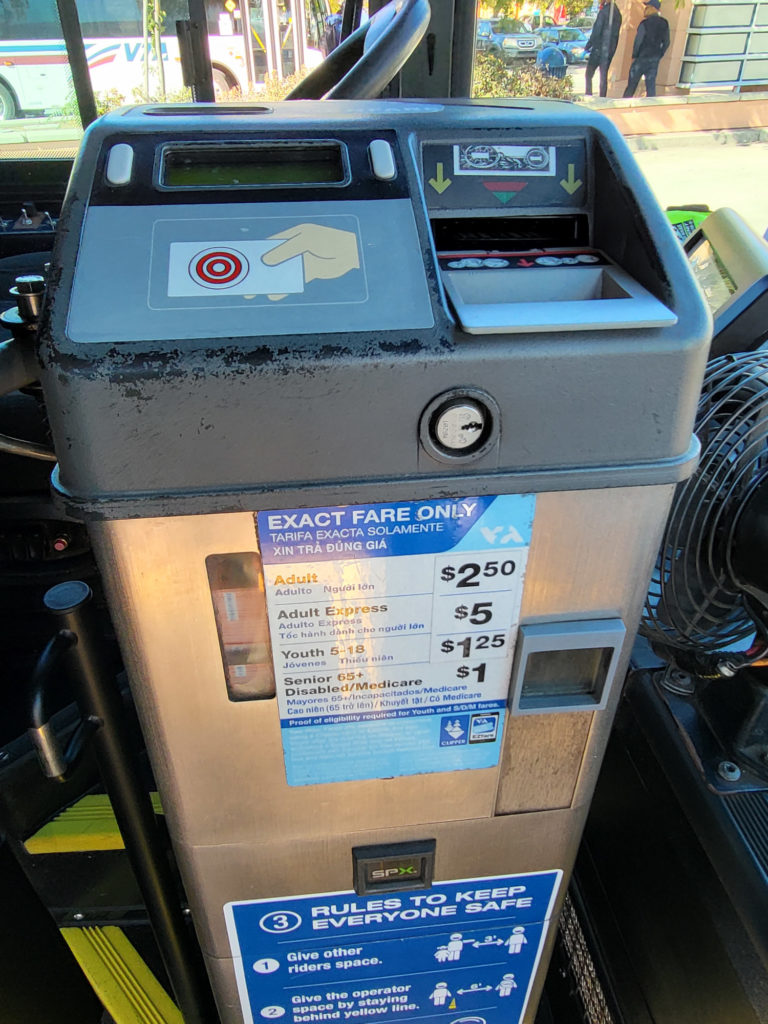
Got a Clipper Card? “Tag” your Clipper Card in the blue area on the white Clipper Card reader aboard any VTA bus. On 35-ft. and 40-ft. buses, the Clipper Card reader is to the right of the fare box. On 60-ft. articulated buses, the Clipper Card reader is to your left, after you enter the bus’s front doors. A Clipper Card reader resembles the photo below.
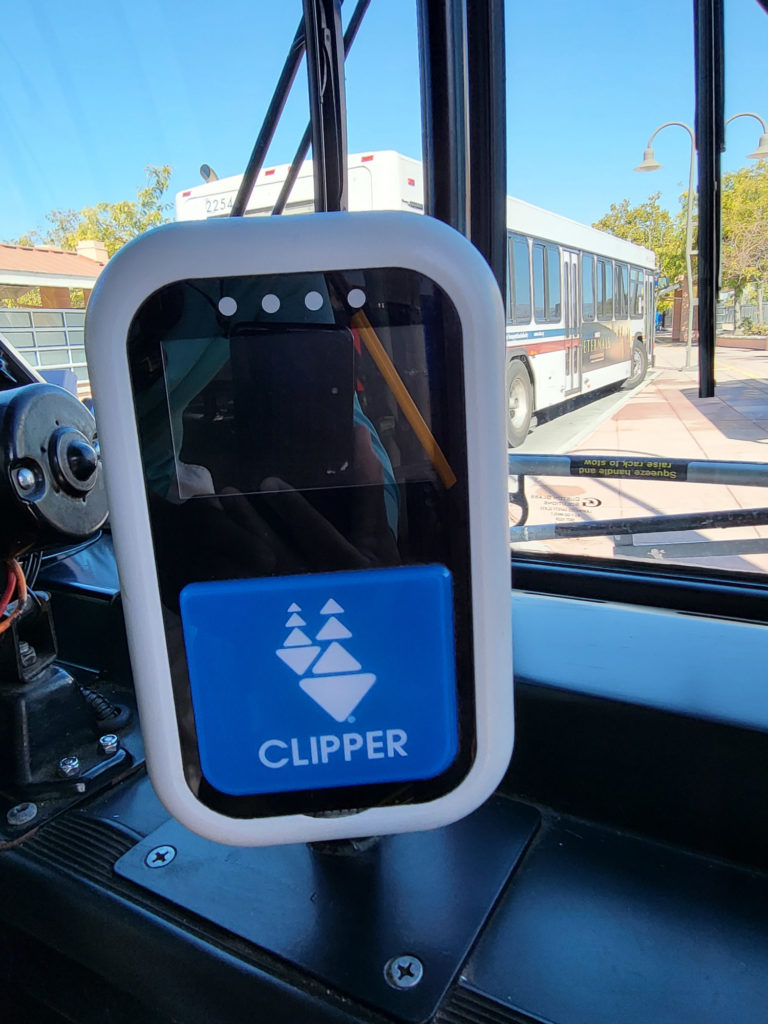
After tagging your card, ensure the Clipper Card reader credits your fare before boarding the bus. This helps speed your bus trip and the trips of those aboard.
Note that there are no more paper day passes available thru the fare boxes as of January 1, 2016. You will need to use your Clipper Card for these passes.
You can acquire a Clipper Card in any of the following ways:
- Ticket Vending Machines (TVMs) at any VTA light rail station
- select Walgreens stores in Santa Clara County
- other retailers in the San Francisco Bay Area
- For your Apple or Android smart phone or tablet, at the Apple Store or Google Play, respectively.
This video from VTA below explains how to purchase a Clipper Card from a VTA light rail ticket vending machine.
After boarding the bus, move to the back of the bus and sit down in any available seat. If required to stand, please remain behind the yellow safety line and hold on to the hand rails provided, above the seats. Try to avoid crowding the front of the bus, especially when standing. This makes it difficult for those sitting to get off the bus at their stops, helping to slow things down.
The front of every VTA bus, behind the driver, has seats facing the aisle. As a courtesy, let seniors, the disabled, and pregnant women sit on those seats. As another courtesy, on crowded buses, offer your seat to a woman (especially a pregnant woman) or a senior. This makes their bus ride – and yours – more pleasant.
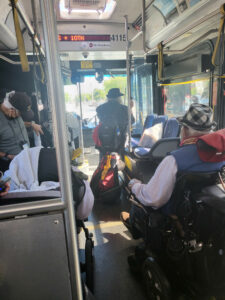
Here are additional rules of etiquette when riding any VTA bus for you to read and learn from. These rules of etiquette, when followed, allow a pleasant transit ride for you and others. Remember: you are riding on PUBLIC transportation.
- VTA buses announce all upcoming bus stops on routes. Make sure to pay attention and listen for the bus stop you want to get off at.
- If you have the Transit “app” on your smart phone, make sure to pay attention to when your bus stop is coming up. Otherwise, If you have no idea on how your destination stop looks like, tell the bus driver where you want to get off.
- Immediately after your bus stop is announced, pull the bell cord or touch the yellow strip on the wall to alert the driver that you’d like to get off at the next bus stop. This will ring a signal chime and light a sign saying “Stop Requested” at the front of the bus. (A smaller “Stop Requested” light will also appear on the bus driver’s dashboard.)
- If able-bodied, leave the bus thru the rear doors. This helps shorten the time the bus is at a stop, ensuring the bus stays on time for other riders. Step as far away from the rear doors, taking all your belongings with you. Never step to the side of a bus’s rear doors – you could slip and fall under the wheels.
VTA Bus Transfers
Some of your trips may require you to take more than one bus line to reach your destination. Sometimes, you may need to transfer on to a light rail or commuter rail system to reach your destination.
If you already have a Clipper Card, here’s how VTA fare is charged between buses or light rail:
Yes. Once you tag on, you'll have 2 hours of free transfers on VTA bus/light rail. If you tag on more than 2 hours later, your Clipper Card will be charged for an additional one-way fare. Multiple one-way fares charged in a single day will cap out at $7.50 (price of a day pass). — VTA (@VTA) December 2, 2021
When planning your trip , give yourself at least five (5) minutes’ lead time, between the time you arrive at the VTA bus connection’s stop, and the time your VTA connecting bus leaves that stop. This will give you time to reach the VTA connecting bus stop(s). Double that time if you are a senior, disabled, or carrying a lot of bags with you.
If you are taking a regional bus service like the Highway 17 Express Bus service , allow at least ten (10) minutes’ lead time to get to its bus stops either in downtown San Jose, or at San Jose Diridon Station .
Plan on riding an intercity service like Greyhound or Megabus ? Allow at least 30 minutes’ lead time between the arriving VTA bus and scheduled departure for your intercity bus. This allows time for you to check yourself and any luggage you carry on to the bus. Help speed your intercity trip by buying your intercity bus ticket in advance.
Make sure to check the bus schedule(s) during your trip planning to allow for the best, fastest travel time between bus lines you will need.
Many VTA bus lines connect with the light rail system throughout Santa Clara County. As with connecting with VTA buses, plan your trip ahead of time, giving yourself at least five (5) minutes between when your bus arrives at the light rail station, and when the light rail train you want departs. Double that time if you are a senior, disabled, or carrying a lot of bags with you.
VTA buses and light rail serve Caltrain stations at Mountain View, San Jose Diridon, and Tamien light rail stations. VTA buses also stop at many stations along the Caltrain corridor in Santa Clara County, from Palo Alto to San Jose to Gilroy.
VTA buses and light rail also serve Capitol Corridor and Altamont Commuter Express stops in Santa Clara and San Jose Diridon. Riding Amtrak anywhere in the United States? VTA buses and light rail serve Amtrak’s only stop in Santa Clara County, at San Jose Diridon Station.
For all rail services except Amtrak, allow at least ten (10) minutes’ lead time between the time your bus arrives, and the time your connecting train departs the station. This will give you time to get to the station platform and buy your train ticket(s) if needed.
When taking Amtrak, allow at least one (1) hour between the time your bus arrives at San Jose Diridon Station, and your Amtrak train’s departure time. This gives you time to check in any baggage you have aboard the train, and to properly “check in” for the departing train as needed.
If you don’t know where your bus is going, ask the bus driver first before boarding. This way, you don’t end up on the wrong bus and stranded.
When riding the bus, if possible, avoid unnecessary conversations with the bus driver. While basic information is to be expected of the bus driver, that bus driver has two primary jobs: keeping the bus and its passengers safe and running the bus on time. In some cases, the bus driver may not be familiar with the area the bus is running through. It’s best to get the information you need for your trip before you depart. Read the previous section above for how to get this information .
How To Ride VTA Light Rail
Below is a map of the VTA Light Rail System, courtesy of VTA.
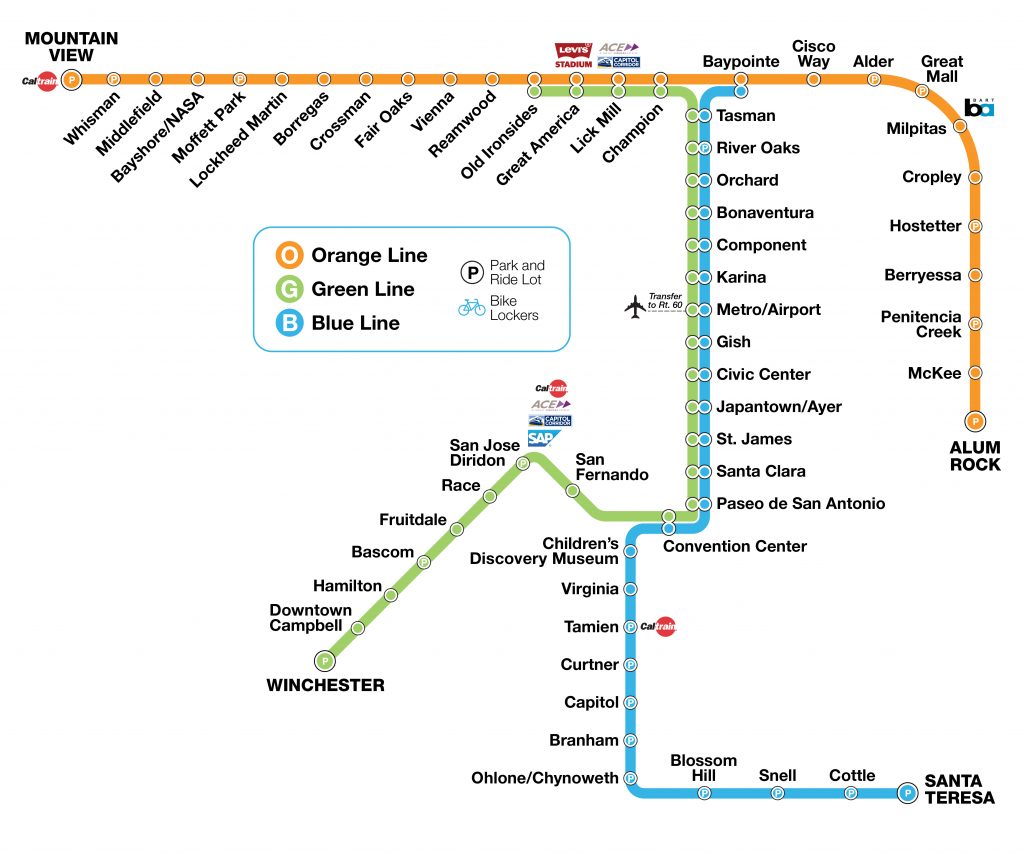
Light Rail stations have level platforms, signs, and shelters. Some stations have a center platform located between the two tracks, side platforms with two tracks in between, or a single platform with only one track. In downtown San Jose, northbound Light Rail trains run on 1st Street while southbound Light Rail trains run on 2nd Street.
FREE wireless internet (“Wi-Fi”) is available on all VTA light rail cars, and at the Winchester, Alum Rock, and Ohlone-Chynoweth light rail stations. Here’s how to use VTA’s public Wi-Fi network .
- Light rail schedules are read from left to right.
- Light rail routes go in two directions (north/south). The origin and the destination are indicated in the timetables.
- Not all stations are listed on the schedule. The stations listed are called timepoints.
- Find the timepoint (column) for your starting point or closest to and before your starting point.
- Go down the column underneath the timepoint to find the time closest to when you want to board the Light Rail.
- If you need to be somewhere by a certain time, find the timepoint closest to where you are going and what time the Light Rail will arrive there. Work your way back to where you will begin your trip to find out what time you will need to get on the Light Rail.
- We recommend arriving at a Light Rail station about five (5) minutes before the time shown on the timetable. If you are a senior or disabled plan on arriving at least ten (10) minutes before the time shown on the timetable.
If you don’t have a valid pass, make sure to purchase your ticket or pass before boarding. Ticket vending machines are available at all stations.
If you have a Clipper Card , make sure to “tag on” with your card at any of the black Clipper Card readers before boarding a VTA light rail train. The below photos show what a Clipper Card fare reader at a VTA light rail station looks like.
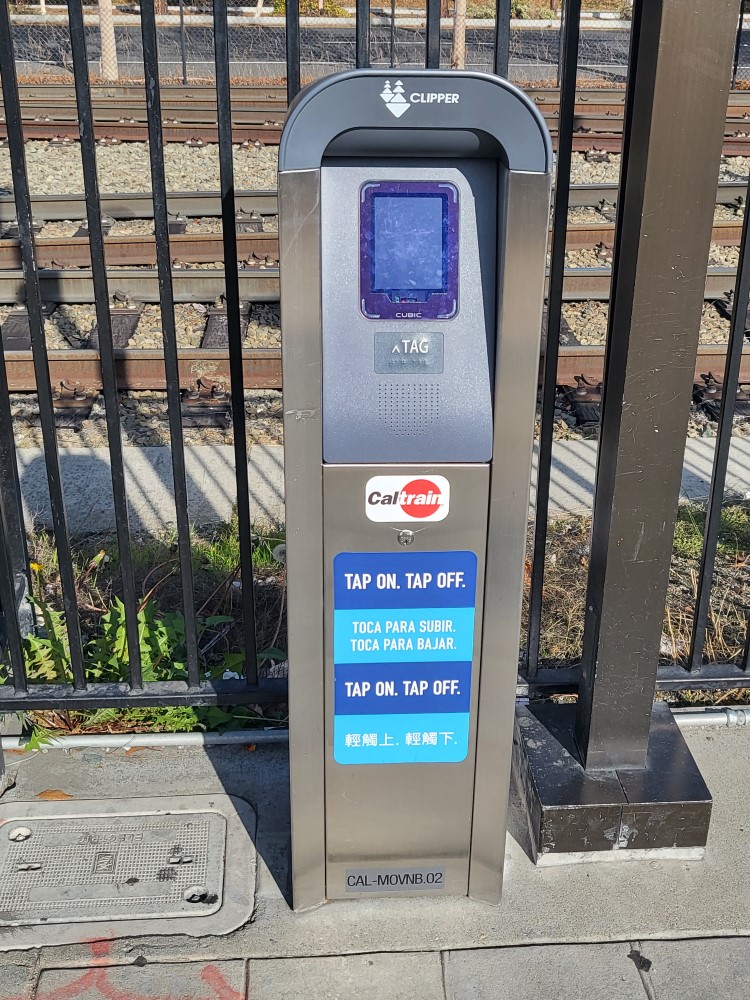
Failure to provide proof of payment to the fare inspector could result in a citation and fine of up to $276 or more.
The video from a light rail rider group below, shows you how to buy an 8-hour excursion pass (good for a round trip ticket) on VTA light rail.
A Clipper Card , when loaded with proper fare, simplifies transfers between light rail, VTA buses, other Bay Area transit agencies, and vice versa. This video from VTA below explains how to purchase a Clipper Card from a VTA light rail ticket vending machine.
Many VTA light rail stations have shelters and benches to protect you from the elements. While waiting for your light rail train, stay behind the yellow line and away from the tracks.
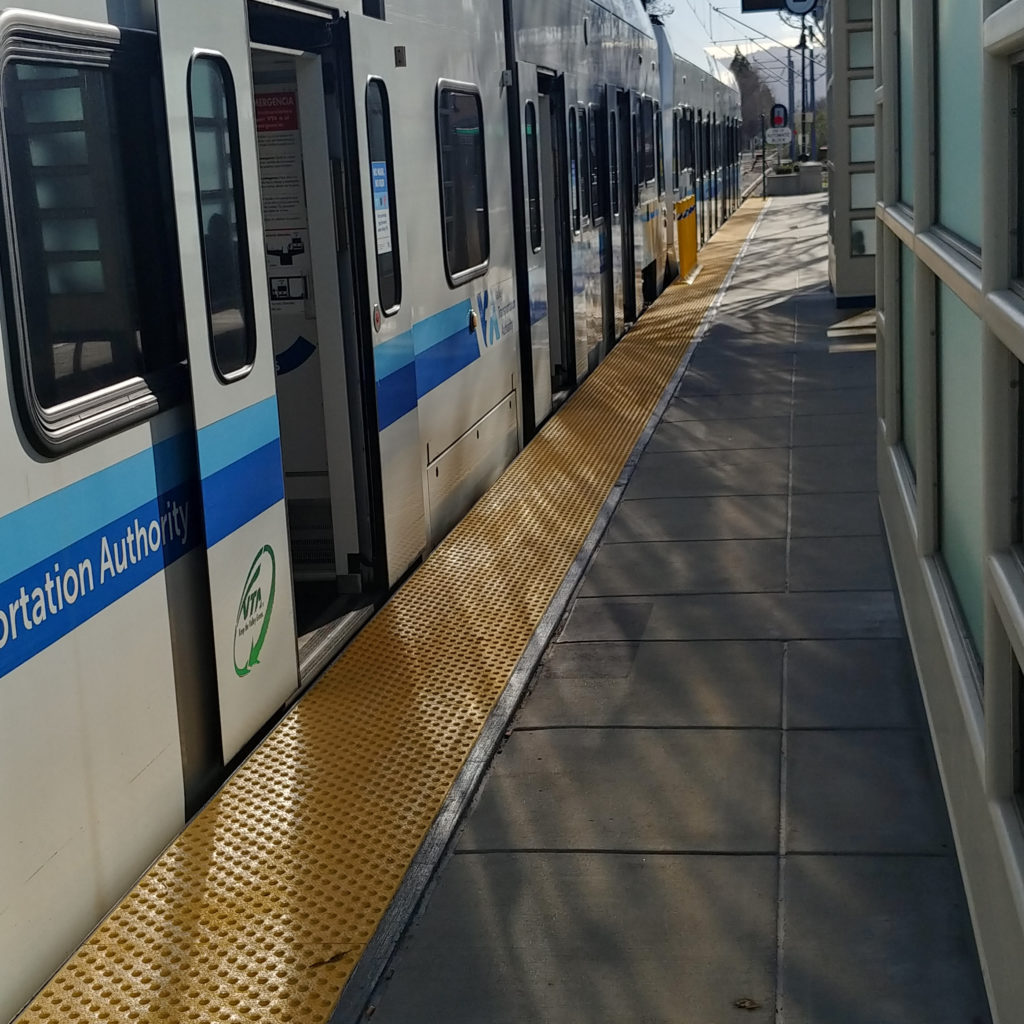
Like any other type of train, light rail trains can run on any track, at any speed, at any time. Light rail trains do not stop instantly; they often require long distances to fully stop.
Here are safety and security tips to help keep you safe at any VTA light rail station.
Every VTA light rail station has a television monitor indicating what line, destination, and when the next train will arrive.
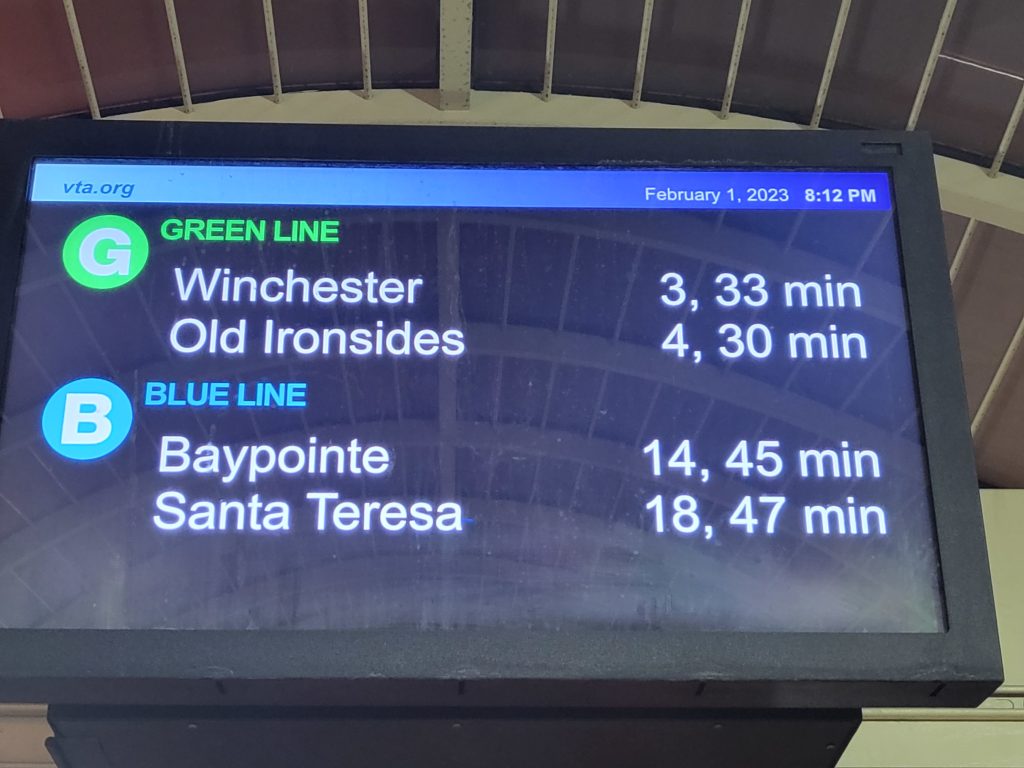
The monitors at each light rail station display the current date and time. They display what lines stop at each station and their estimated arrival time, up to one hour after the current displayed time. Where needed, the monitors also display system status and information on transit alternatives due to maintenance on the system, etc.
As a light rail train approaches the station, make sure to look for the electronic destination signs. The signs and audio announcements will indicate the train’s final destination.
Read the signs on the platforms and by the tracks to make sure that you are waiting for the correct train.
Wait on the platform behind the yellow tactile warning band until the light rail car has come to a complete stop.
The light rail train operator will open doors automatically. Stand clear of the opening doors . After allowing those wishing to leave the train to do so, carefully enter the train. Take a seat or hold the handrails while the train is in motion.
When the four-tone sound plays, it means the doors are closing, and light rail is about to leave. Stand clear of closing VTA light rail doors . Do not block the closing doors of any VTA light rail train – otherwise, you will cause the train and others to be late.
Here are some basic tips on how to make room for other people aboard VTA light rail.
Are you taking a bicycle with you aboard VTA light rail? Make sure to use the vertical bike racks at the center (bending portion) of any VTA light rail car. The photo below shows how to store your bicycle aboard any VTA light rail car.
No room on the bicycle rack(s) for your bicycle? Place your bicycle underneath your seat. Do not place your bicycle (or anything else) in the aisle where it will block other passengers.
Occasionally, a VTA uniformed fare inspector may board the train and ask for a proof-of-payment. When asked, present your pass or ticket to the inspector.
To further help you safely board your bicycle aboard a VTA light rail car, we filmed our own video that shows you how. View that video below.
- Listen to the automated announcement for the name of the next station. If you are about to get off at the next station, press the gray strip (located by the windows) before the train arrives at the station.
- If you have the Transit app on your smart phone, make sure you programmed the phone to tell you where your final destination is, and follow its instructions. Listen to the Transit app for when you need to get off light rail.
- Use caution when exiting Light Rail vehicles. The doors will stay open only a few seconds. As a courtesy, allow seniors, the disabled, or pregnant women to exit light rail first.
- Before exiting light rail, make sure to take any and all of your belongings with you.
VTA Light Rail Transfers
Often, you will need to transfer to a bus or even another type of train to reach your final destination. Below are some tips on how to simply light rail connections to buses and other trains.
As a reminder, here’s how VTA transfers between light rail lines and buses work, particularly if you have a Clipper Card:
When planning your trip , give yourself at least five (5) minutes’ lead time, between the time VTA light rail arrives at your stop, and the time your VTA connecting bus leaves that stop. This will give you time to reach the VTA connecting bus stop. Double that time if you are a senior, disabled, or carrying a lot of bags with you.
Are you taking a regional bus service like the Highway 17 Express Bus service at San Jose Diridon Station? Allow at least ten (10) minutes’ lead time to get to the Highway 17 Express bus stop on the other side of San Jose Diridon Station .
Plan on riding an intercity service like Greyhound or Megabus ? Allow at least 30 minutes’ lead time between the arriving VTA light rail train and scheduled departure for your intercity bus. This allows time for you to check yourself and any luggage you carry on to the bus. Help speed your intercity trip by buying your intercity bus ticket(s) in advance.
Make sure to check the VTA light rail schedule during your trip planning to allow for the best, fastest travel time necessary.
You can connect to another VTA light rail train line at two (2) stations in San Jose:
- Convention Center
Check the VTA Light Rail schedule and allow at least ten (10) minutes for the connecting train. Listen on board the VTA light rail train for stop announcements, to help get you to your final destination.
Transferring to Other Transit Services
Sometimes, your journey may involve taking a local or regional (intercity) bus or train run by another company or agency. This portion of the guide will give you tips on how to handle such a transfer.
VTA buses and light rail serve Caltrain stations in Mountain View, San Jose, Tamien, Morgan Hill, San Martin, and Gilroy.
VTA buses and light rail also serve Capitol Corridor and Altamont Corridor Express (ACE) commuter trains in Santa Clara , and at San Jose Diridon Station .
Riding Amtrak intercity rail anywhere in the United States? VTA light rail serves Amtrak’s only stop in Santa Clara County, at San Jose Diridon Station.
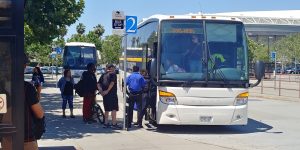
For all rail services except Amtrak, allow at least 15 minutes’ lead time between the time your bus arrives, and the time your connecting train departs the station. This will give you time to get to the station platform and buy your train ticket(s) if needed.
When taking Amtrak, allow at least one (1) hour between the time your VTA bus or light rail arrives at San Jose Diridon Station, and your Amtrak train’s departure time. This gives you time to check in any baggage you have aboard the train, and to properly “check in” for the departing train as needed.
As of July 2019, VTA buses and light rail also connect with following commuter bus and intercity bus services, at San Jose Diridon Station:
- Amtrak Thruway
- Monterey-Salinas Transit ( 55 and 86 bus lines to Monterey, King City, and Paso Robles)
- Santa Cruz Metro ( Highway 17 Express , in cooperation with VTA and Amtrak California)
At the Palo Alto Transit Center , VTA buses also connect with bus services like
- SamTrans (San Mateo County Transit)
- Marguerite shuttle buses to/from Stanford University
- Dumbarton Express bus services to/from the East Bay
At the Gilroy Transit Center, VTA buses connect with bus services like
- International Bus Lines (service throughout California, Tijuana, and Mexicali)
- San Benito County Express (Hollister and San Juan Batista)
In northern Santa Clara County, cities like Palo Alto and Mountain View have their own community shuttles. To supplement corporate employee shuttle buses in that city, Mountain View has an additional shuttle bus service . For those attending or working at Stanford University and related facilities, Marguerite Shuttle buses serves those areas. They typically connect with VTA and Caltrain at the transit centers in Palo Alto and Mountain View, respectively.
Timing rules of thumb to follow when connecting between these services and VTA:
For community bus lines and other bus lines serving local areas: allow at least 10 minutes lead time between arriving and departing connections.
For inter-county bus lines like Santa Cruz Metro, Dumbarton Express, and San Benito County Express: allow at least 15 minutes’ lead time between arriving and departing connections.
For intercity bus lines like Greyhound or Megabus: allow at least 30 minutes’ lead time between arriving and departing connections. This allows allows you time to check your bags in for departure, as needed.
We hope that this guide will give you some basics on how to ride and pay for your VTA bus or light rail trip. This should be especially useful if you are visiting Silicon Valley, or if you have just moved into Silicon Valley from elsewhere.
Please contact us for any questions or corrections to this guide. Your information will help others use public transit in Silicon Valley.
Eugene Bradley Founder, Silicon Valley Transit Users
Michael, Marcia Cohen-Zakai, Monica Mallon, Thomas Mayer, and Judy Purrington contributed to this guide.
3 comments for “ VTA First-Time Transit Rider Guide ”
Super helpful article. Thank you
When going to a SJ Sharks game with a ticket, is it free to ride on light rail ??
DJ: Currently, you still need proper, valid fare to ride light rail – even with a Sharks game ticket. -Eugene
Leave a Reply Cancel reply
Your email address will not be published. Required fields are marked *
Save my name, email, and website in this browser for the next time I comment.
Don't subscribe All new comments Replies to my comments Please notify me of followup comments via e-mail. You can also subscribe without commenting.
This site uses Akismet to reduce spam. Learn how your comment data is processed .
Privacy Overview
Advertisement
Supported by
Hot Oceans Worsened Dubai’s Dramatic Flooding, Scientists Say
An international team of researchers found that heavy rains had intensified in the region, though they couldn’t say for sure how much climate change was responsible.
- Share full article

By Raymond Zhong
Scenes of flood-ravaged neighborhoods in one of the planet’s driest regions stunned the world this month. Heavy rains in the United Arab Emirates and Oman submerged cars, clogged highways and killed at least 21 people. Flights out of Dubai’s airport, a major global hub, were severely disrupted.
The downpours weren’t a total surprise — forecasters had anticipated the storms several days earlier and issued warnings. But they were certainly unusual.
Here’s what to know.
Heavy rain there is rare, but not unheard-of.
On average, the Arabian Peninsula receives a scant few inches of rain a year, although scientists have found that a sizable chunk of that precipitation falls in infrequent but severe bursts, not as periodic showers. These rains often come during El Niño conditions like the ones the world is experiencing now.
U.A.E. officials said the 24-hour rain total on April 16 was the country’s largest since records there began in 1949 . And parts of the nation had already experienced an earlier round of thunderstorms in March.
Oman, with its coastline on the Arabian Sea, is also vulnerable to tropical cyclones. Past storms there have brought torrential rain, powerful winds and mudslides, causing extensive damage.
Global warming is projected to intensify downpours.
Stronger storms are a key consequence of human-caused global warming. As the atmosphere gets hotter, it can hold more moisture, which can eventually make its way down to the earth as rain or snow.
But that doesn’t mean rainfall patterns are changing in precisely the same way across every part of the globe.
In their latest assessment of climate research , scientists convened by the United Nations found there wasn’t enough data to have firm conclusions about rainfall trends in the Arabian Peninsula and how climate change was affecting them. The researchers said, however, that if global warming were to be allowed to continue worsening in the coming decades, extreme downpours in the region would quite likely become more intense and more frequent.
Hot oceans are a big factor.
An international team of scientists has made a first attempt at estimating the extent to which climate change may have contributed to April’s storms. The researchers didn’t manage to pin down the connection precisely, though in their analysis, they did highlight one known driver of heavy rain in the region: above-normal ocean temperatures.
Large parts of the Indian, Pacific and Atlantic Oceans have been hotter than usual recently, in part because of El Niño and other natural weather cycles, and in part because of human-induced warming .
When looking only at El Niño years, the scientists estimated that storm events as infrequent as this month’s delivered 10 percent to 40 percent more rain to the region than they would in a world that hadn’t been warmed by human activities. They cautioned, however, that these estimates were highly uncertain.
“Rainfall, in general, is getting more extreme,” said Mansour Almazroui, a climate scientist at King Abdulaziz University in Jeddah, Saudi Arabia, and one of the researchers who contributed to the analysis.
The analysis was conducted by scientists affiliated with World Weather Attribution, a research collaboration that studies extreme weather events shortly after they occur. Their findings about this month’s rains haven’t yet been peer reviewed, but are based on standardized methods .
The role of cloud seeding isn’t clear.
The U.A.E. has for decades worked to increase rainfall and boost water supplies by seeding clouds. Essentially, this involves shooting particles into clouds to encourage the moisture to gather into larger, heavier droplets, ones that are more likely to fall as rain or snow.
Cloud seeding and other rain-enhancement methods have been tried around the world, including in Australia, China, India, Israel, South Africa and the United States. Studies have found that these operations can, at best, affect precipitation modestly — enough to turn a downpour into a bigger downpour, but probably not a drizzle into a deluge.
Still, experts said pinning down how much seeding might have contributed to this month’s storms would require detailed study.
“In general, it is quite a challenge to assess the impact of seeding,” said Luca Delle Monache, a climate scientist at the Scripps Institution of Oceanography in La Jolla, Calif. Dr. Delle Monache has been leading efforts to use artificial intelligence to improve the U.A.E.’s rain-enhancement program.
An official with the U.A.E.’s National Center of Meteorology, Omar Al Yazeedi, told news outlets that the agency didn’t conduct any seeding during the latest storms. His statements didn’t make clear, however, whether that was also true in the hours or days before.
Mr. Al Yazeedi didn’t respond to emailed questions from The New York Times, and Adel Kamal, a spokesman for the center, didn’t have further comment.
Cities in dry places just aren’t designed for floods.
Wherever it happens, flooding isn’t just a matter of how much rain comes down. It’s also about what happens to all that water once it’s on the ground — most critically, in the places people live.
Cities in arid regions often aren’t designed to drain very effectively. In these areas, paved surfaces block rain from seeping into the earth below, forcing it into drainage systems that can easily become overwhelmed.
One recent study of Sharjah , the capital of the third-largest emirate in the U.A.E., found that the city’s rapid growth over the past half-century had made it vulnerable to flooding at far lower levels of rain than before.
Omnia Al Desoukie contributed reporting.
Raymond Zhong reports on climate and environmental issues for The Times. More about Raymond Zhong

IMAGES
VIDEO
COMMENTS
GetThere ®, a business travel management solution. It is designed to handle the most complex travel programs. while remaining intuitive for both travelers and travel managers. SABRE launches NDC offers in GetThere, expanding traveler choice and flexibility. of the global pandemic, managing business travel programs will require above all ...
getthere.com. GetThere is a corporate travel reservation system that is owned by Sabre Corporation. GetThere first started in 1995 as a company named Internet Travel Network (itn.net) founded by Dan Whaley, Al Whaley and Bruce Yoxsimer. It changed its name to GetThere and went public on NASDAQ under the ticker GTHR in November 1999 [1] and was ...
GetThere. GetThere is designed to manage the most complex travel programs while remaining simple and intuitive for both travelers and travel managers. Travel Management Companies (TMCs) and corporations are challenged with monitoring multiple factors in order to achieve a sustainable travel program. From cost control and expense management all ...
GetThere is a web-based travel management solution designed to help both travel managers and travelers manage complex travel programs. The platform offers a modern online booking system to streamline corporate travel, and is fully optimized for tablet, desktop and mobile devices. GetThere supports global purchasing capabilities with all GDS, as ...
Serving millions of business travelers in over 100 countries, GetThere is the industry's most sophisticated and reliable online travel management solution. GetThere is designed to handle the most complex travel programs while remaining simple and intuitive for both travelers and travel managers. We offer a consumer-grade user experience, fast ...
GetThere delivers a powerful platform for managing corporate travel, meetings and virtual meetings. Business travelers can efficiently book trips and meetings within corporate policy and from ...
Start travel reservations. On the Home page, if you have Demand Management functionality configured, enter required information, such as the purpose of your trip. Select whether you need Flight or Train, Hotel, and/or Car reservations. Note Your site administrator may have turned off the flight, train, hotel, or car reservation features.
GetThere touts its global reach, service and experience, along with local support and travel expertise in market. It claims 80 percent traveler adoption among its North American clients and highlights its role in driving savings through rate control and adoption, granular policy control and demand management. According to executives, the ...
GetThere is a corporate travel reservation system that is owned by Sabre Corporation. GetThere first started in 1995 as a company named Internet Travel Network (itn.net) founded by Dan Whaley, Al Whaley and Bruce Yoxsimer. It changed its name to GetThere and went public on NASDAQ under the ticker GTHR in November 1999 and was acquired by Sabre in August 2000 for $757 million.
See a list of features that GetThere Travel offers. Read feature reviews by real users and compare features to find out what the competition offers. 0. ... Web-based travel reservation system. learn more. Compare. save (1) App Info. Features. Alternatives. Integrations. GetThere Travel Features Features Summary. Functionality. 4.5 /5. 6. Total ...
A majority of the FORTUNE 200 and the BTN Corporate Travel 100 rely on GetThere to streamline processes, improve supplier and contract management, and achieve ongoing and sustainable savings in corporate travel spend. Contact your GetThere representative by calling 1-800-850-3906 or visiting www.getthere.com to learn more. Get more with GetThere.
Sabre presents GetThere as a sophisticated and reliable online travel management solution that offers a user-friendly experience, fast response times, rich content and innovative features for greater online adoption. Sabre further boasts GetThere's 99.98% system uptime, and their team's unrivaled expertise and global reach.
Example: Traveler or Travel Arranger calls and books air reservation with agent, and traveler or Travel Arranger books air reservation online for the same trip. Impact: Two or more reservation locators are created in the airline system for the same traveler, on or about the same calendar dates, creating a duplicate booking which may
MENLO PARK, Calif. and ANNAPOLIS, Md., GetThere(TM), a Sabre company, today announced the first comprehensive information service integrated into an online corporate travel reservation system.
Feb. 2 at 6:18 a.m. ET. USPS employees who use the GetThere travel booking tool no longer need a username and password to access the web-based app. Instead, employees will have to access GetThere by using special URLs, depending on whether they are individually billed account or centrally billed account users. The new URLs can be found on the ...
Government Online Booking Tools utilizing GetThere Dashboards. Major government agencies, as well as Fortune 500 companies, utilize our online booking system, which can consider your organization's travel policy, preferences, and expense management all in one place. This unique dashboard, featuring at-your-fingertips service, puts you in ...
With a seamless integration of NDC in GetThere, you gain unprecedented control between personalization, policy and price. Which means you can meet each of your corporate travelers' needs all at the same time, while creating travel options to deliver value on your terms. Improve your employees' experience, while maintaining control of your ...
Save time at the airport and find out how you can participate for free. Access the Joint Travel Regulations and other travel policies. Featuring the best practices in industry and plug-and-play components, Defense Travel System streamlines the entire process involved in global Department of Defense (DoD) travel.
LAS VEGAS (April 22, 2024) - Today, Brightline West officially broke ground on the nation's first true high-speed rail system which will connect Las Vegas to Southern California.The 218-mile system will be constructed in the middle of the I-15 and is based on Brightline's vision to connect city pairs that are too short to fly and too far to drive.
According to maps on the Rail Authority's website, the proposed high-speed rail line would traverse three regions—northern, central and southern California. "The Phase 1 system will connect San ...
For information on proper disposal of the items below and more, please call the County of Santa Clara Department of Environmental Health, Household Hazardous Waste Program/Small Business Services at 408-299-7300 or visit www.hhw.org. X Liquid Waste. X Hazardous Materials.
This animation shows a simulation of the response of NASA's Ingenuity Mars Helicopter to the system identification, or "Sys-ID," process.… Rover, Helicopter Locations in Jezero Crater This map shows the locations of NASA' Perseverance rover (white star) and Ingenuity Mars Helicopter (cyan star) on Dec. 19,…
Mission Trail Waste Systems. Mission Trail Waste Systems provides residential, commercial and industrial collection services for trash, recycling and organics. We are the franchised hauling company for portions of the City of Santa Clara, and the entire City of Los Altos.
VTA 30-foot bus with single door. "Frequent" VTA bus service ( bus route numbers 1-99; also applies to "Rapid" buses) share many of the same attributes as "Local" bus service. run every 15 minutes or sooner on Mondays-Fridays from 6:30am-6:30pm. run every 15-30 minutes on Saturdays, Sundays, and major holidays+.
Heavy rains in the United Arab Emirates and Oman submerged cars, clogged highways and killed at least 21 people. Flights out of Dubai's airport, a major global hub, were severely disrupted. The ...